Hot tenting is a term used to describe a heated tent shelter system. Today there are options for backpacking one over harsh terrain and longer range. For this outing I decided to go over the essentials of a backpacking hot tenting system. Hot tenting allows options which can be more difficult with other shelter systems. Rather than just surviving a person can thrive. An opportunity for a total reset which allows the next day to be even better than the previous. This is the primary shelter type I use during the cooler months. The temperatures for this outing were in the 40's with rain. There were lots of hills.
So lets Go! Wood, Water and Power! But first lets check out the falls on the way to the trail.
Part 1.

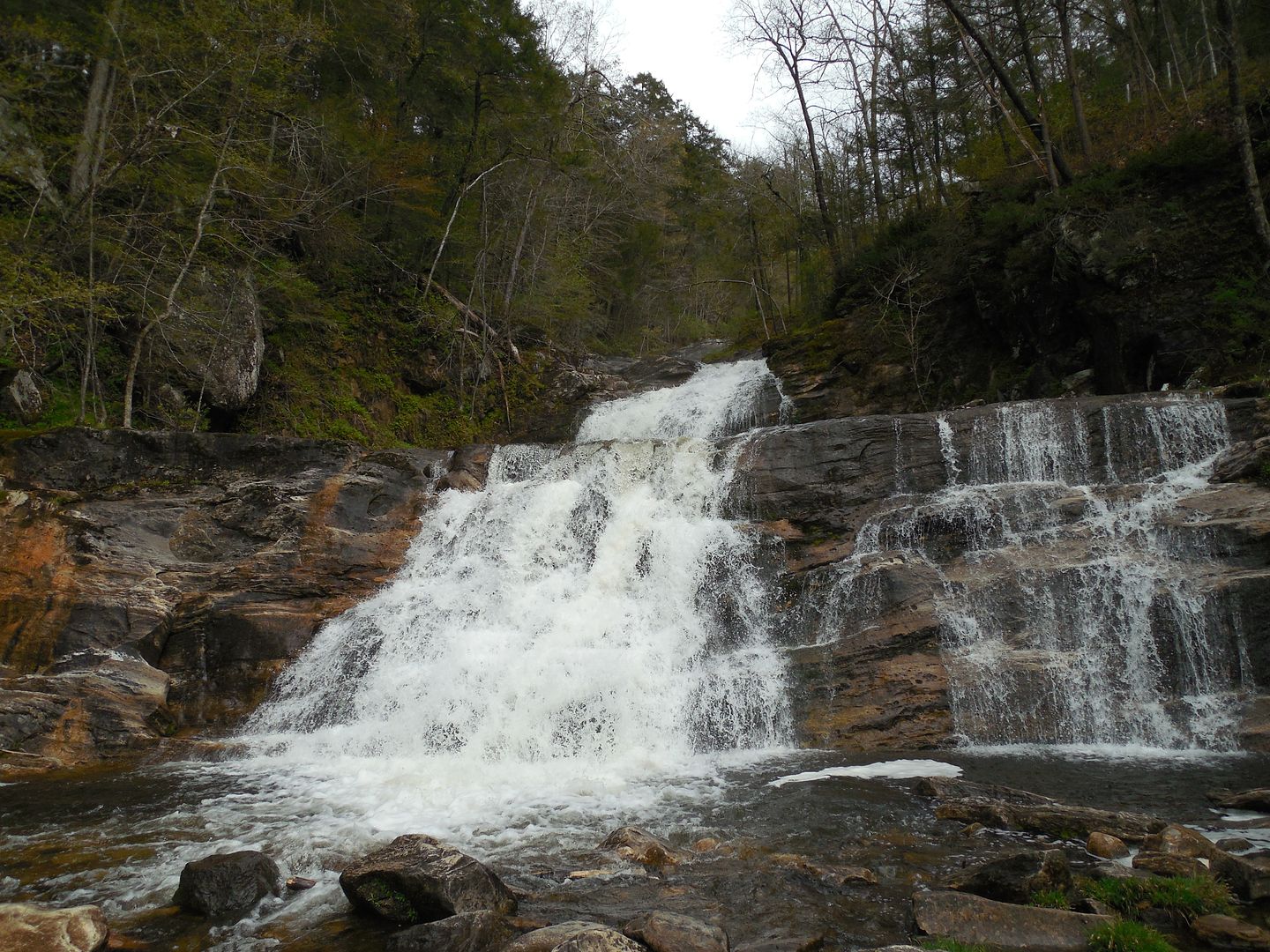
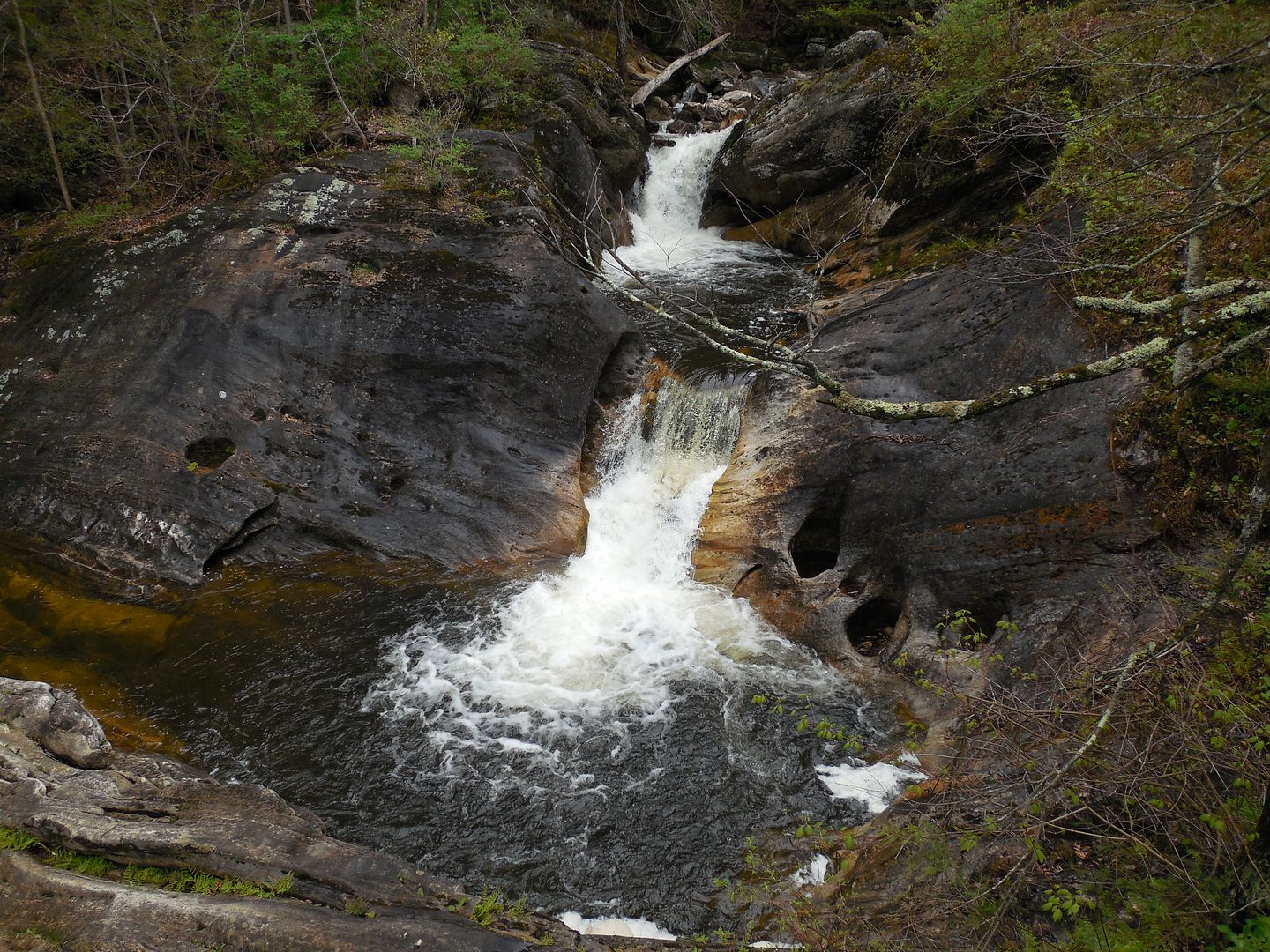
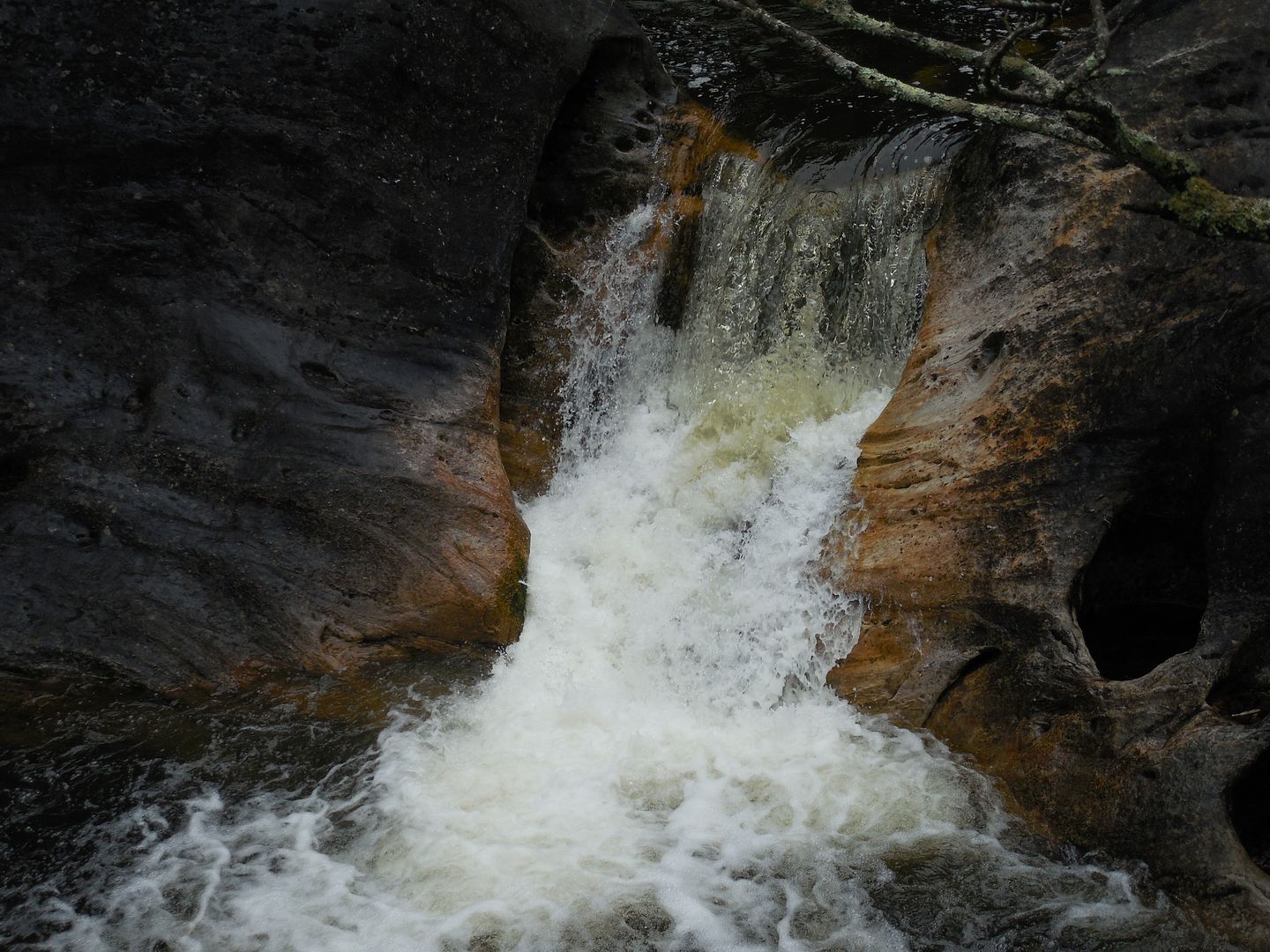

My backpack for this outing. Inside is a hot tent with all the fixings but every attempt was made to reduce pack weight within reason.
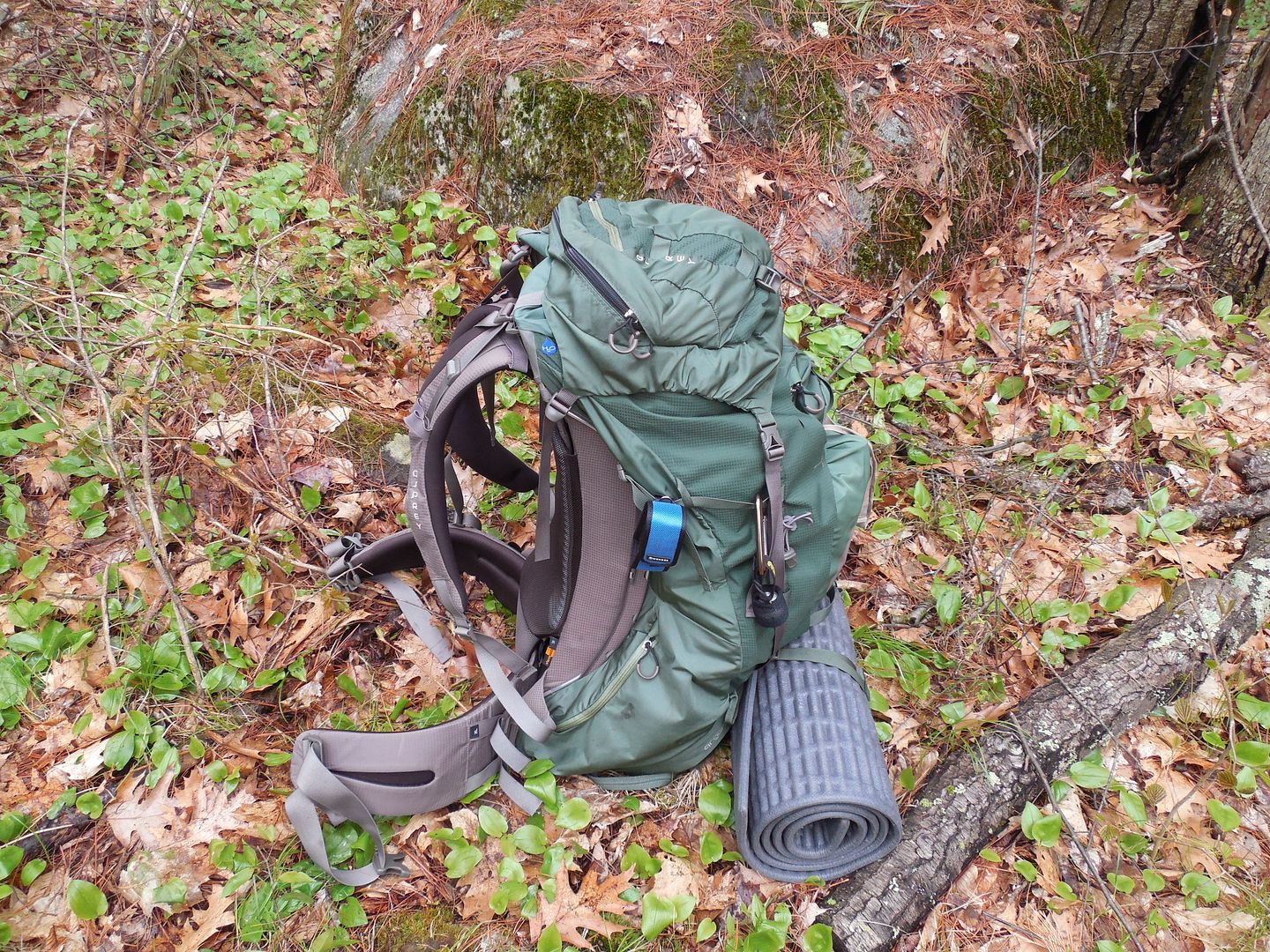
The leaves were at the very cusp of the final week of their explosion. Some green but still a brown and gray overlook. The transformation from this stage to full leaf cover tends to be fast.
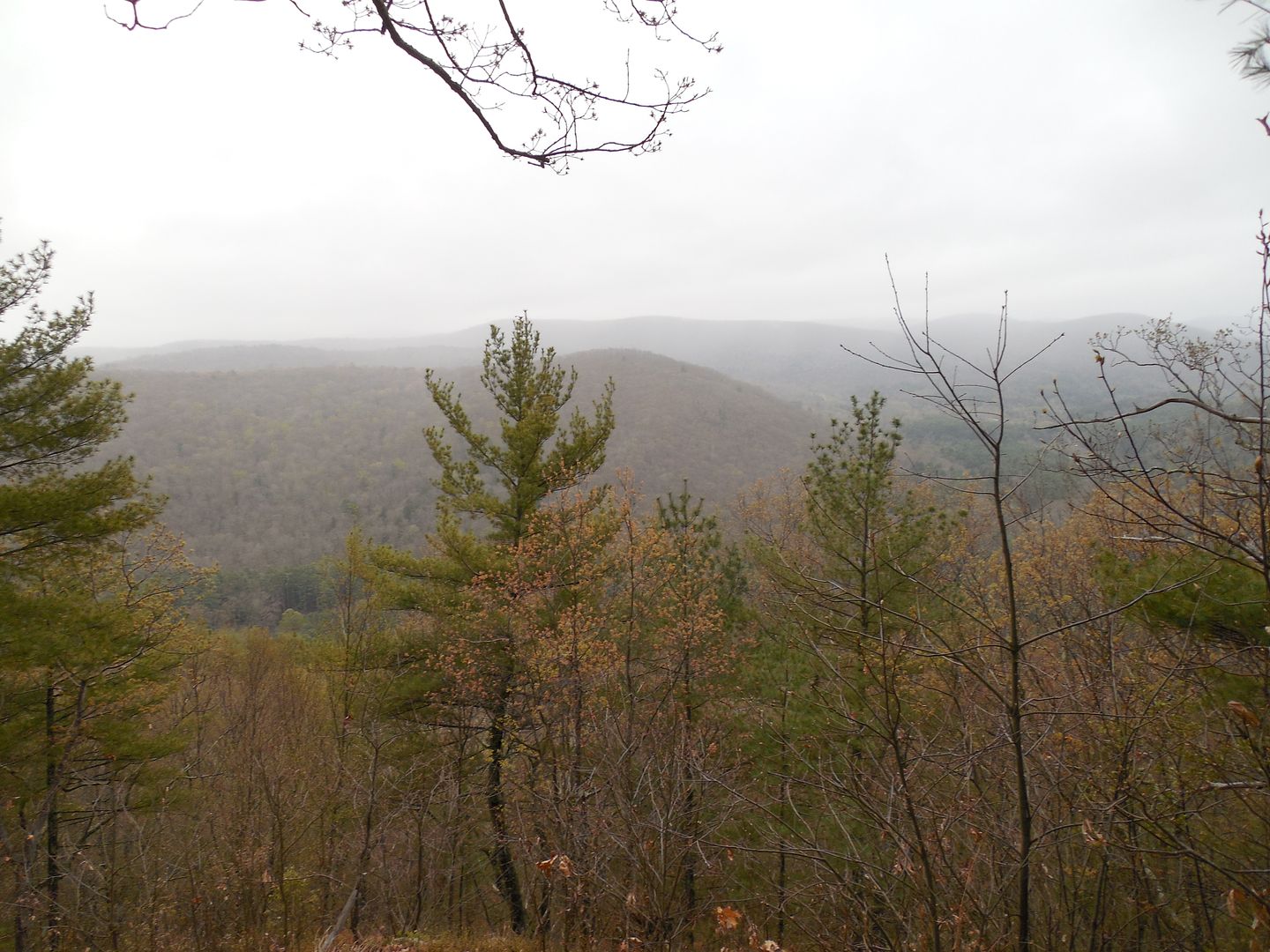
Lots of White birch however for once didn't need the tinder.
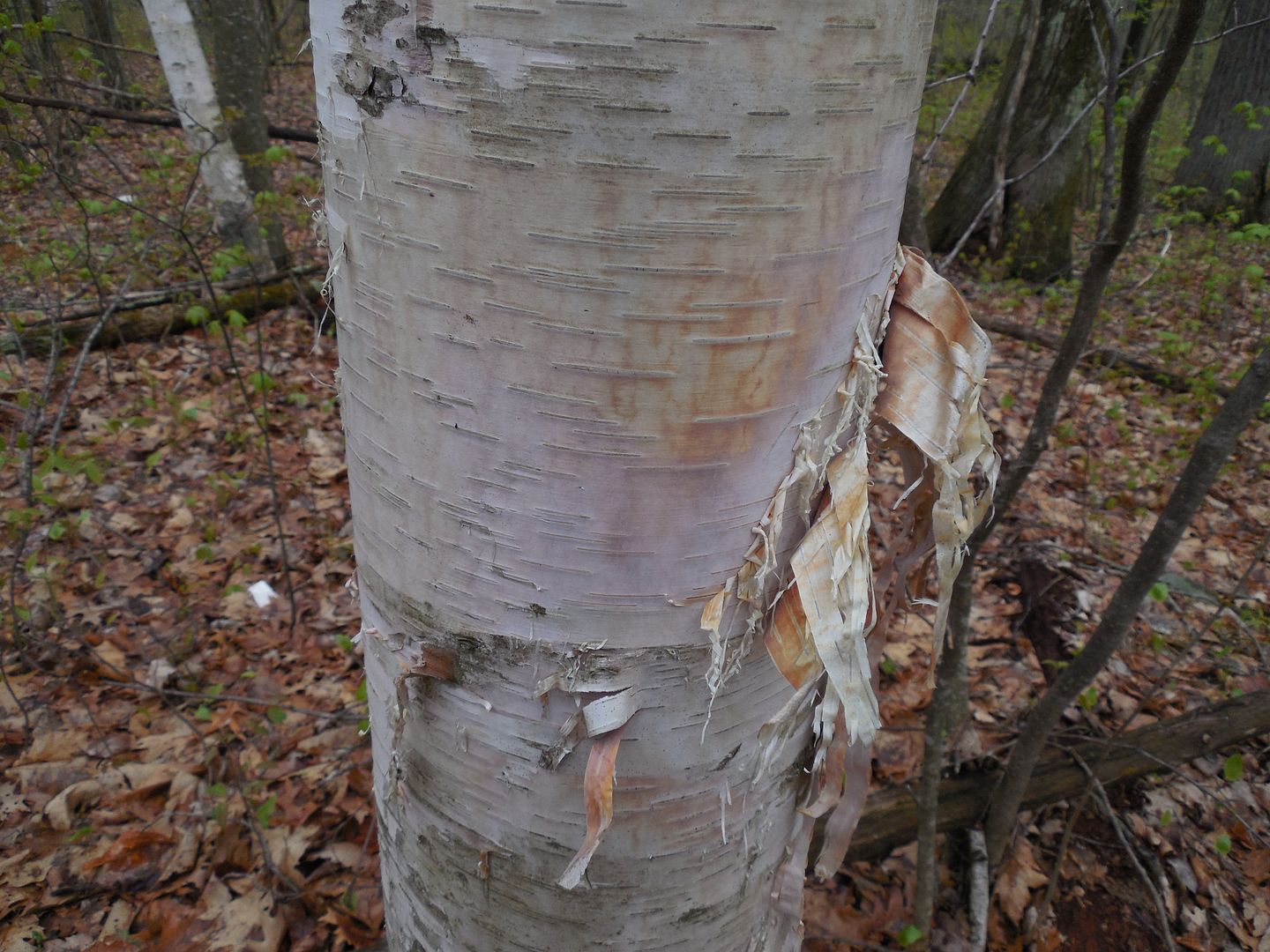
Lots of quartz as well which is another resource but again this outing's focus wasn't on marginal/field expedient firecraft methodologies.
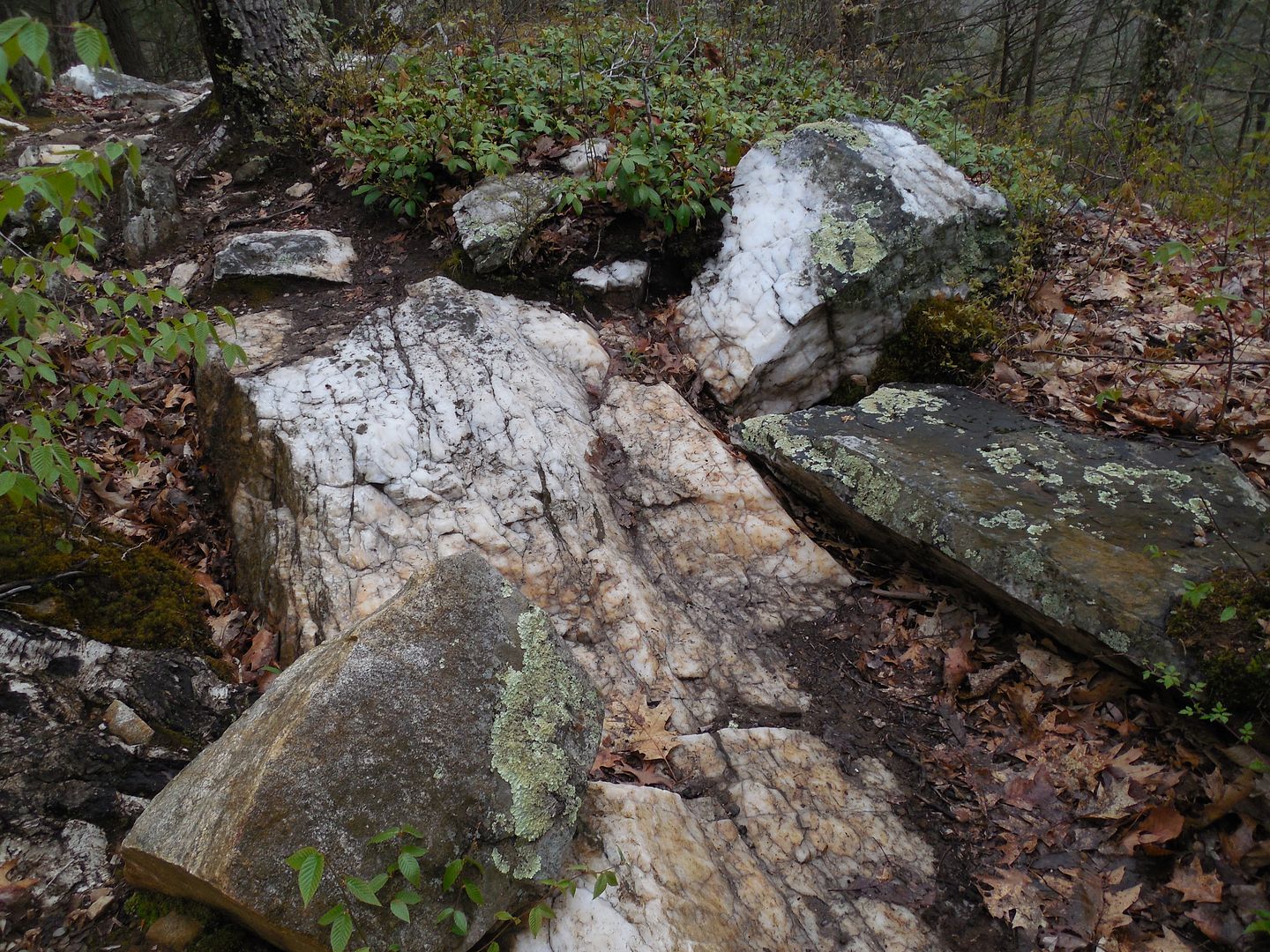
Looks like I will be going over that hill in the distance. I always enjoy seeing the inevitable before hand.
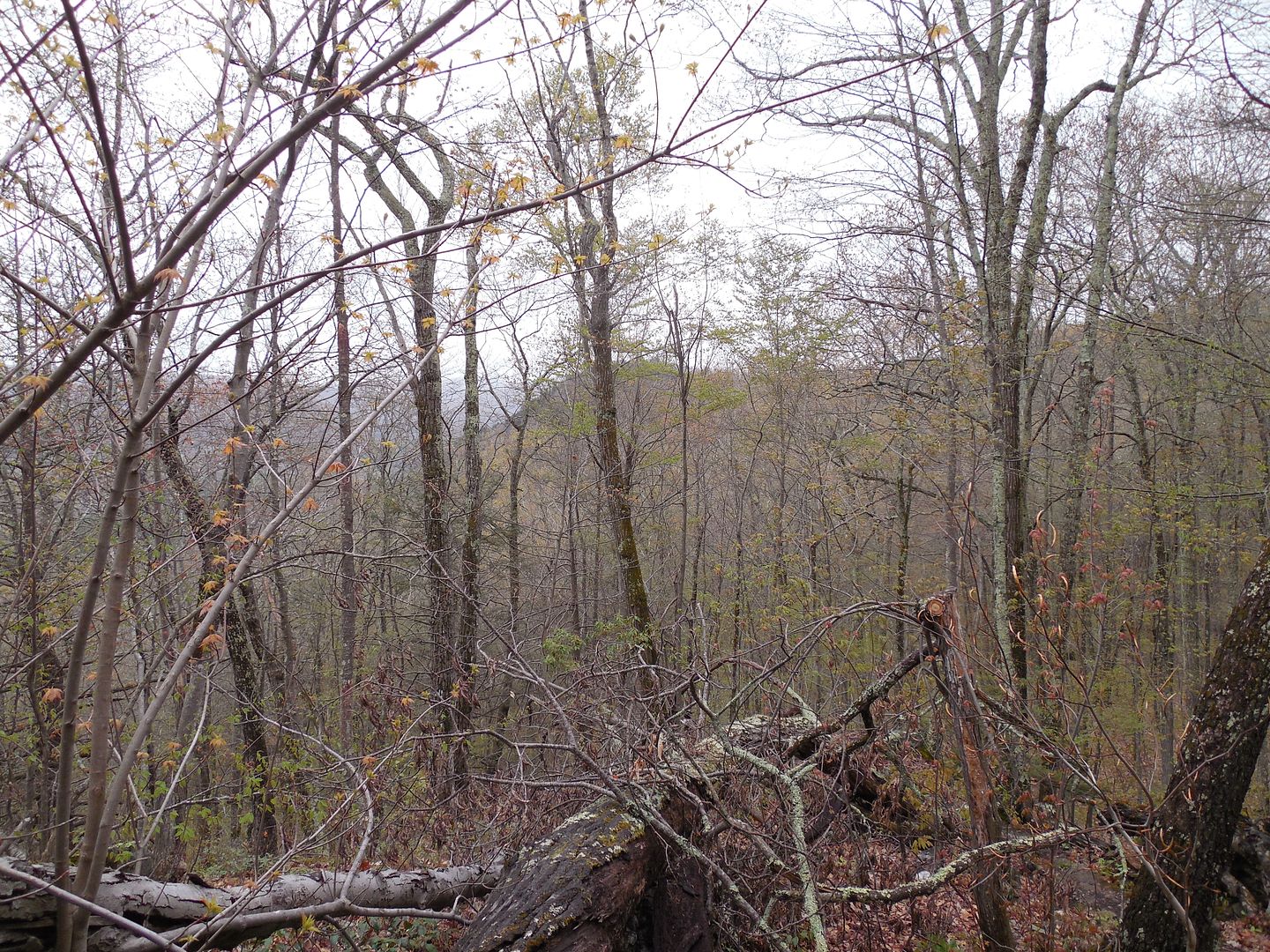
Looks that way.....
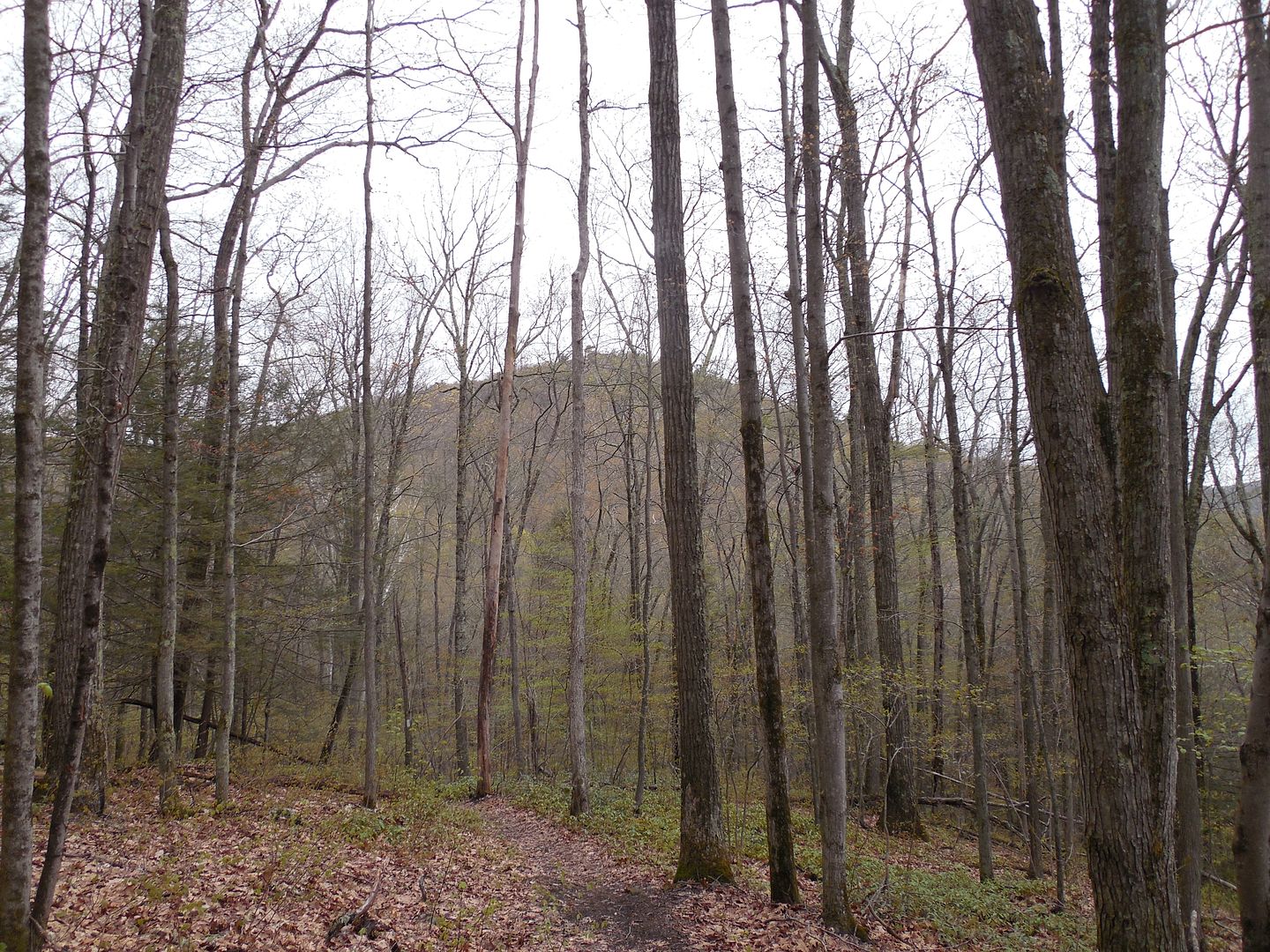
Yup! LOL!
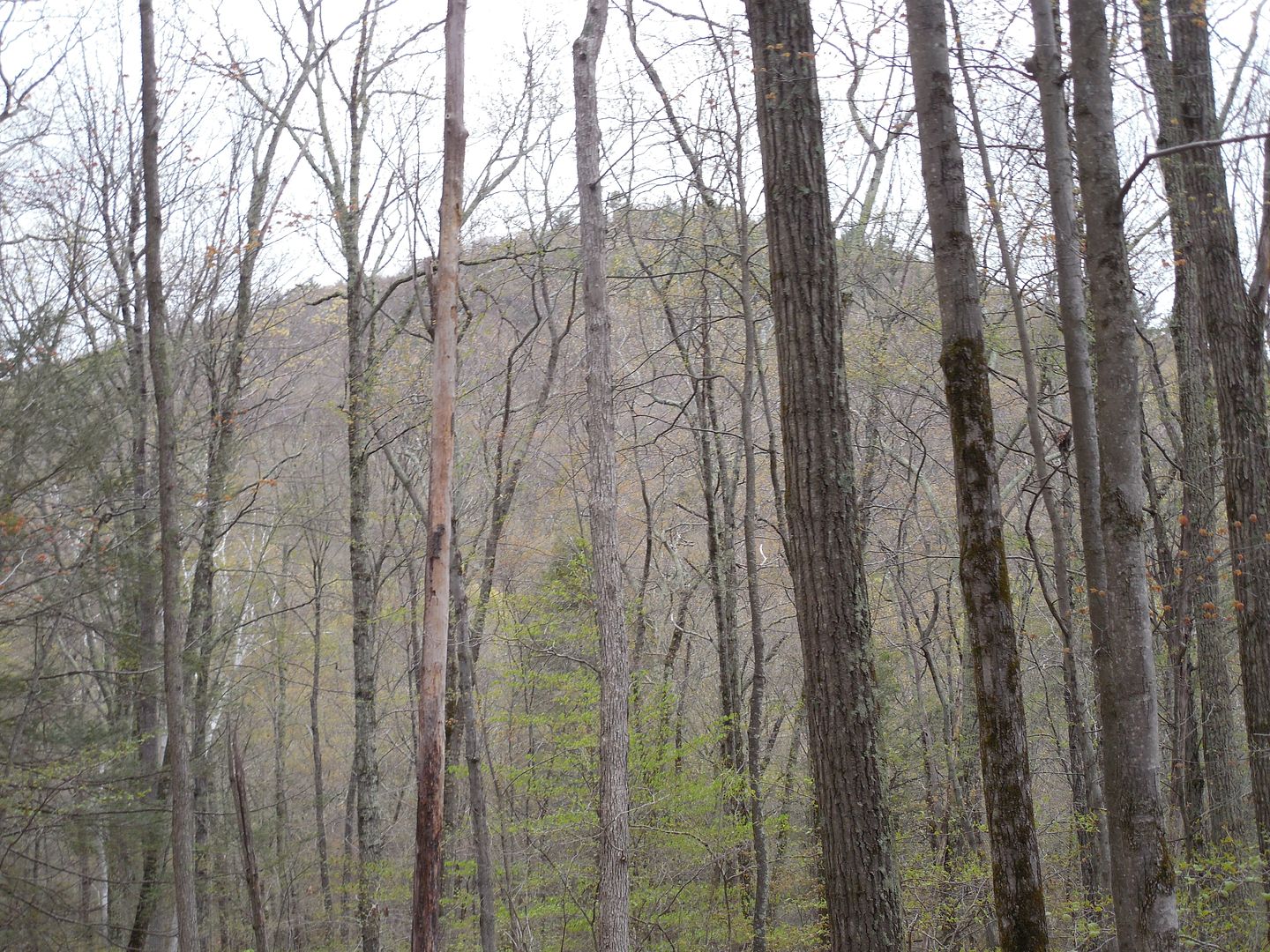
All the rivers, streams and brooks were very high as it rained on and off for most of the week it seemed. Naturally that mean potentially damp wood.
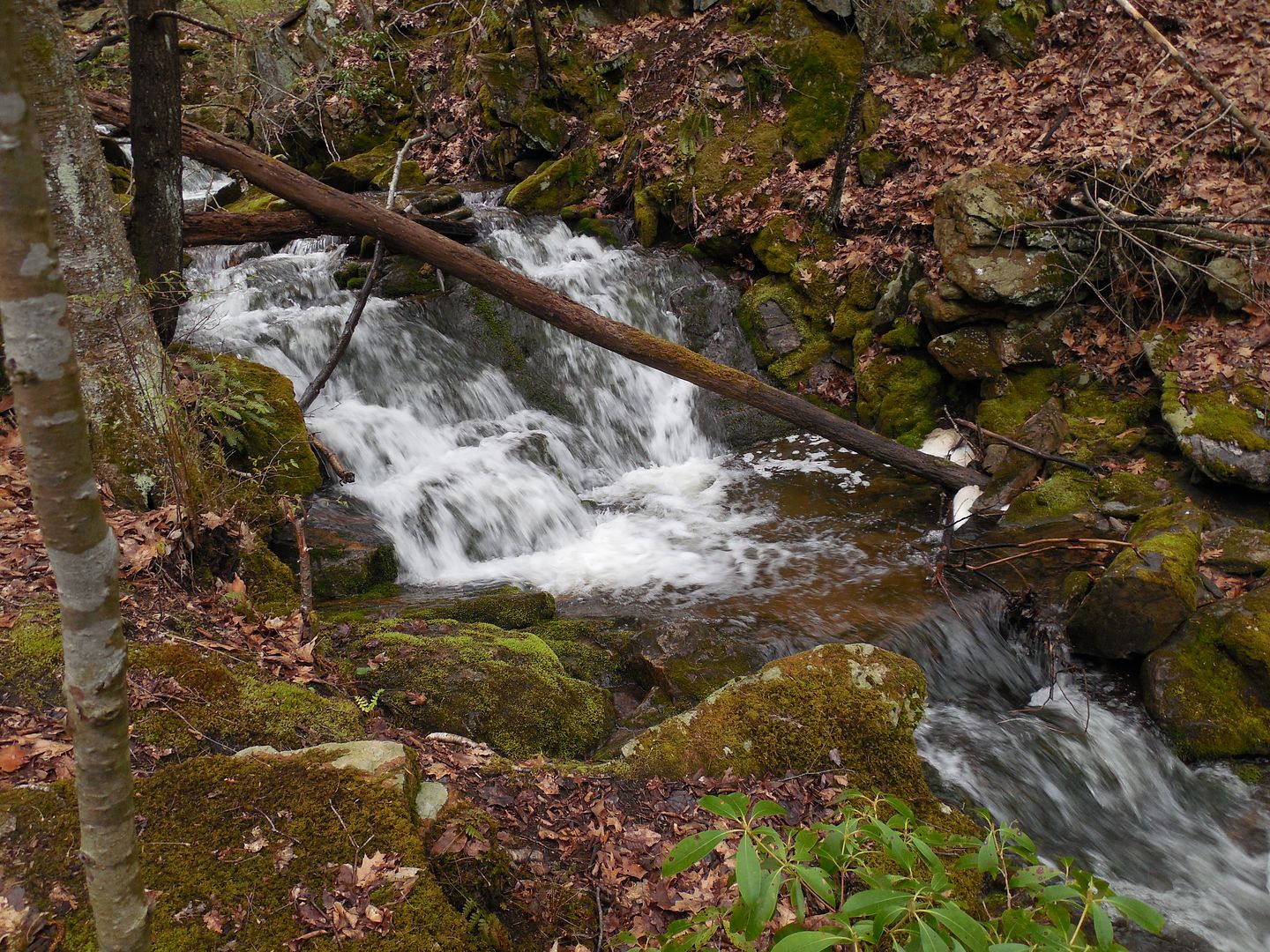
Finally made it to camp an hour before dark. When the weather is questionable one of the first things I do is setup a rain fly. This allows me to unpack without drama. In this case I used a poncho on a ridgeline with two sliding friction knots.
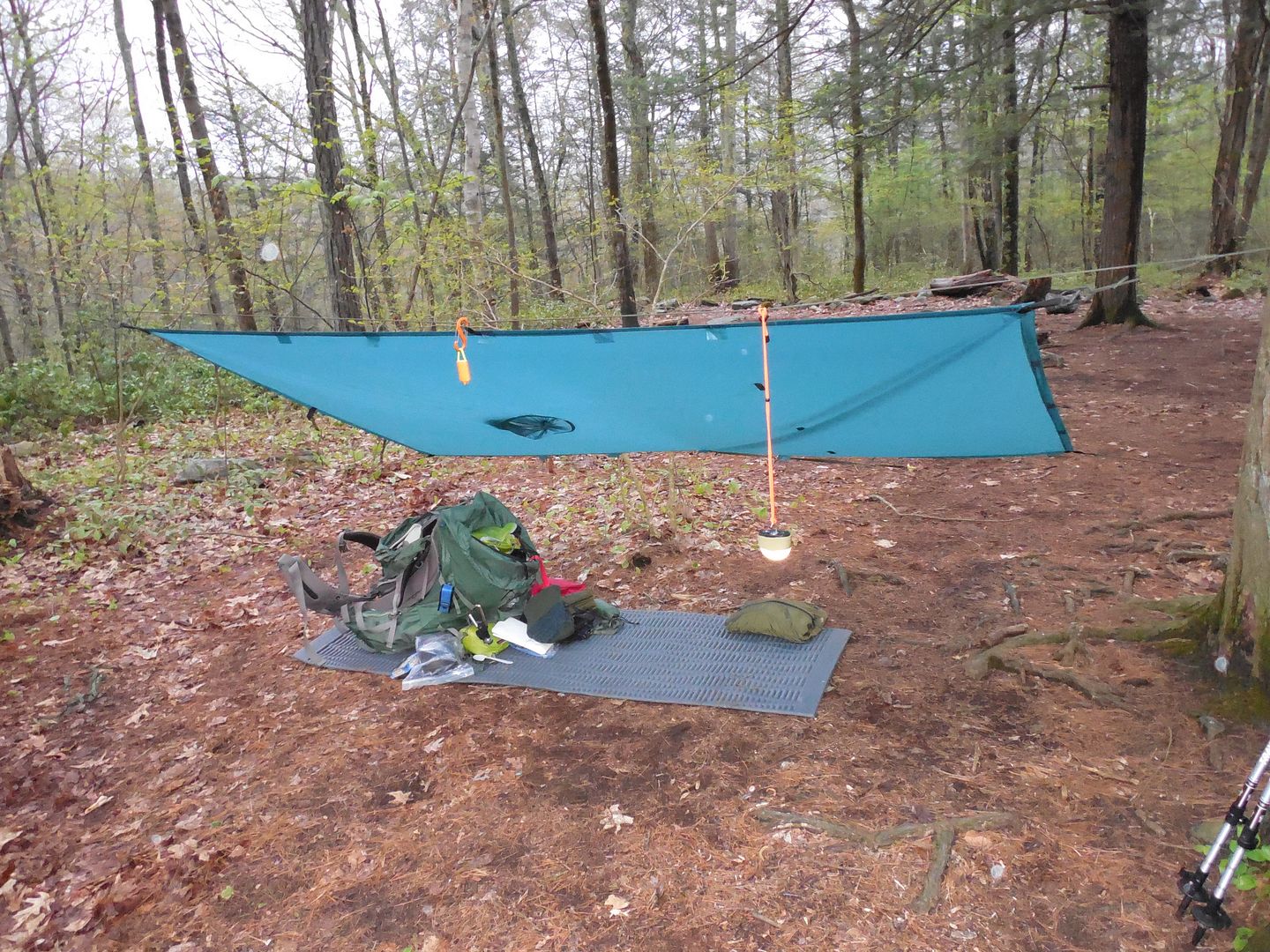
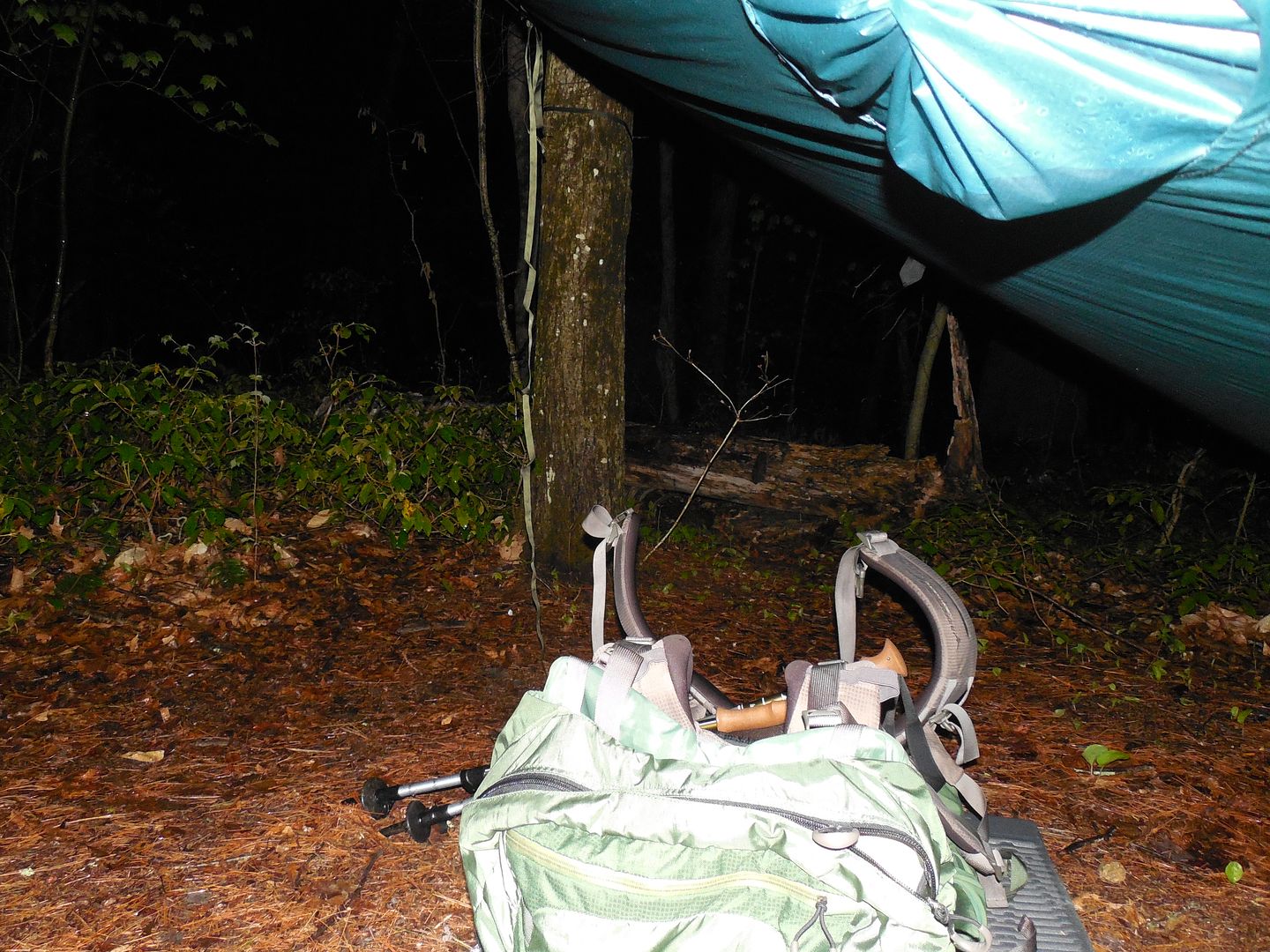
Dark came fast. Maybe it was shorter than 1 hour before? When it's cloudy all day and the phone is packed away time isn't so easy to discern.
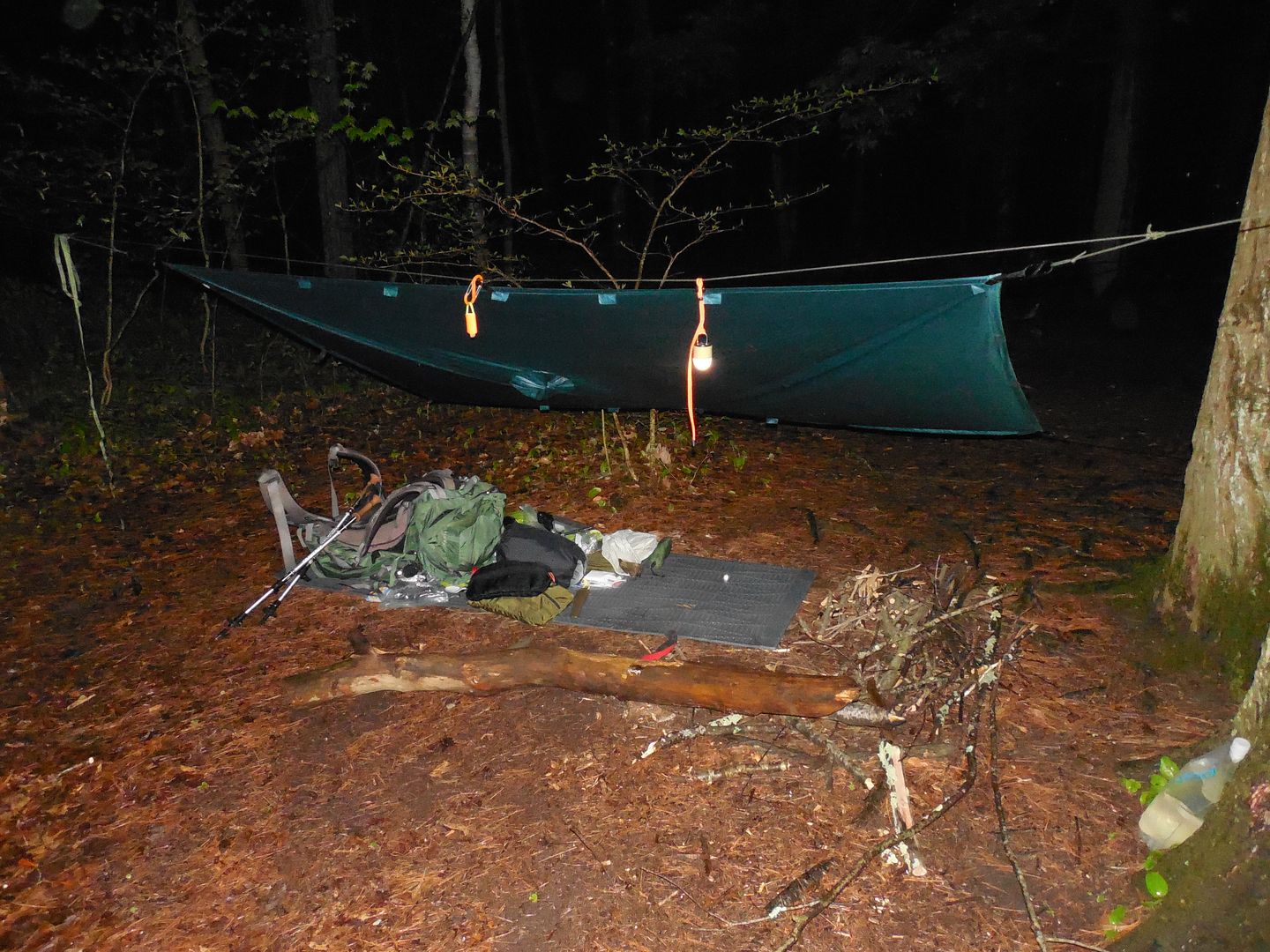
What does a heated shelter camp run on? You guessed it wood, water and power.
Power for illumination was needed.
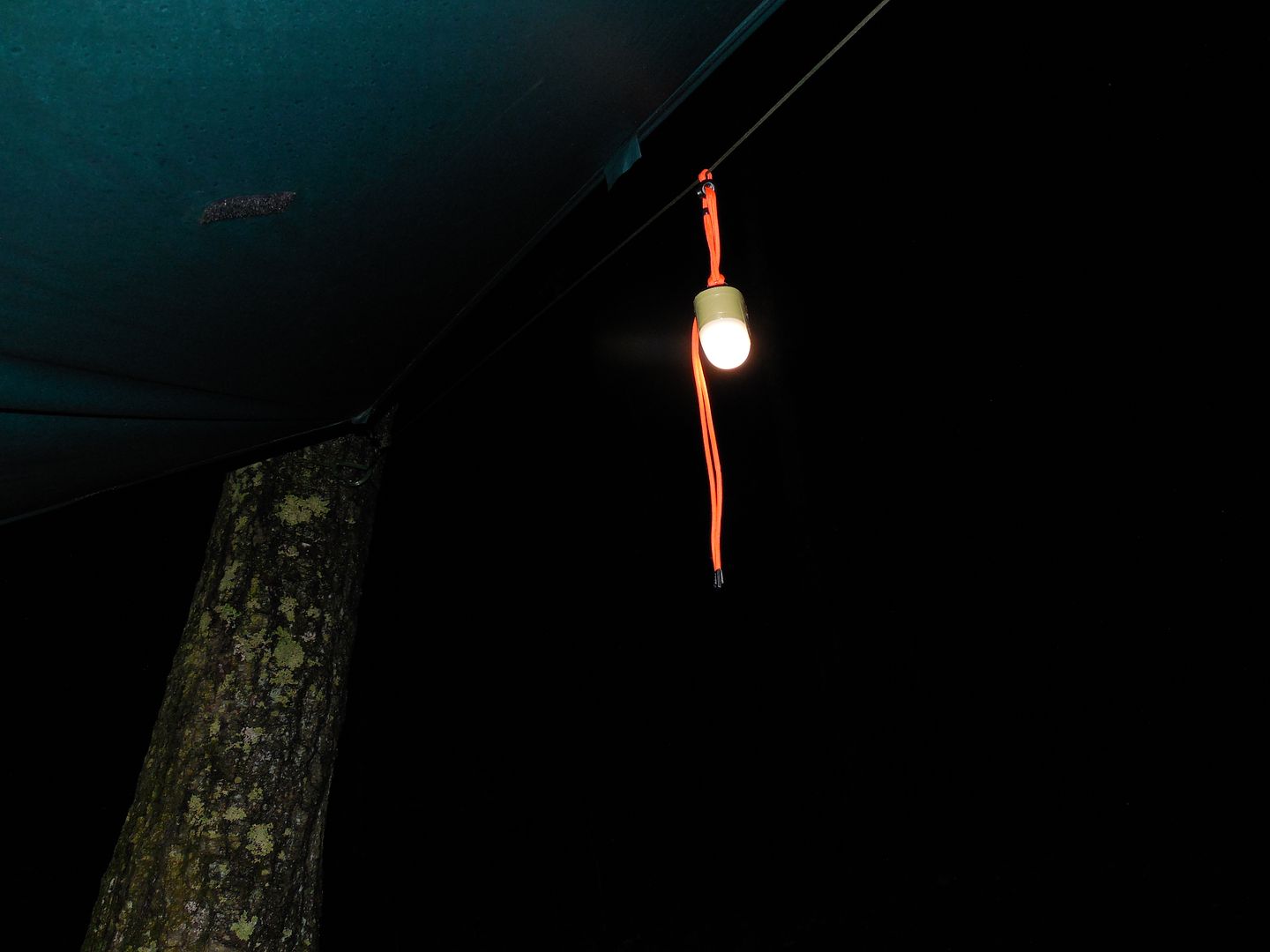
Wood for fuel as planned on boiling water. Yup the wood was wet despite my best foraging skills. Things are harder in the dark.
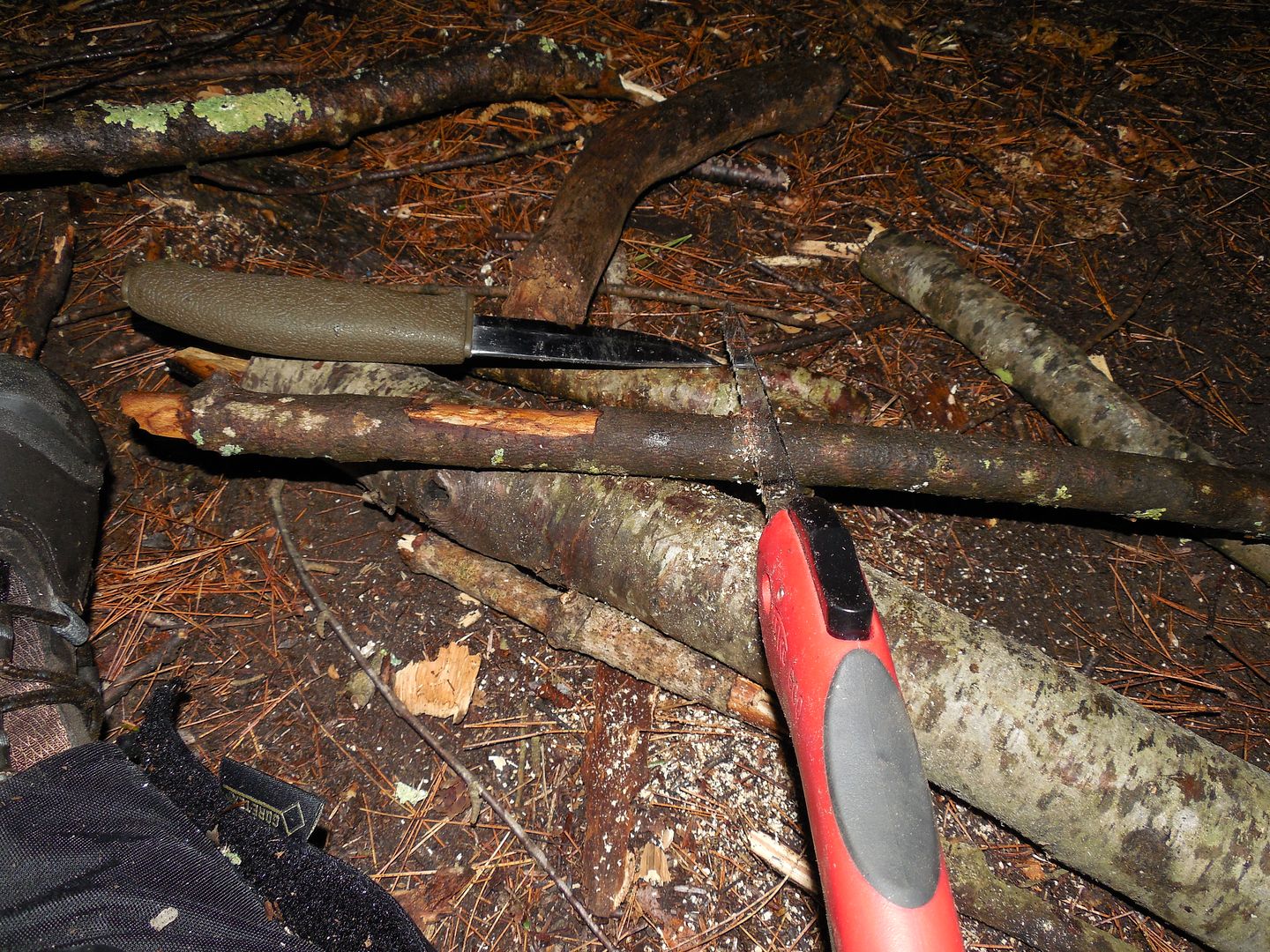
Light weight backpacking tools. A Mora 746 and Felco 600 saw.
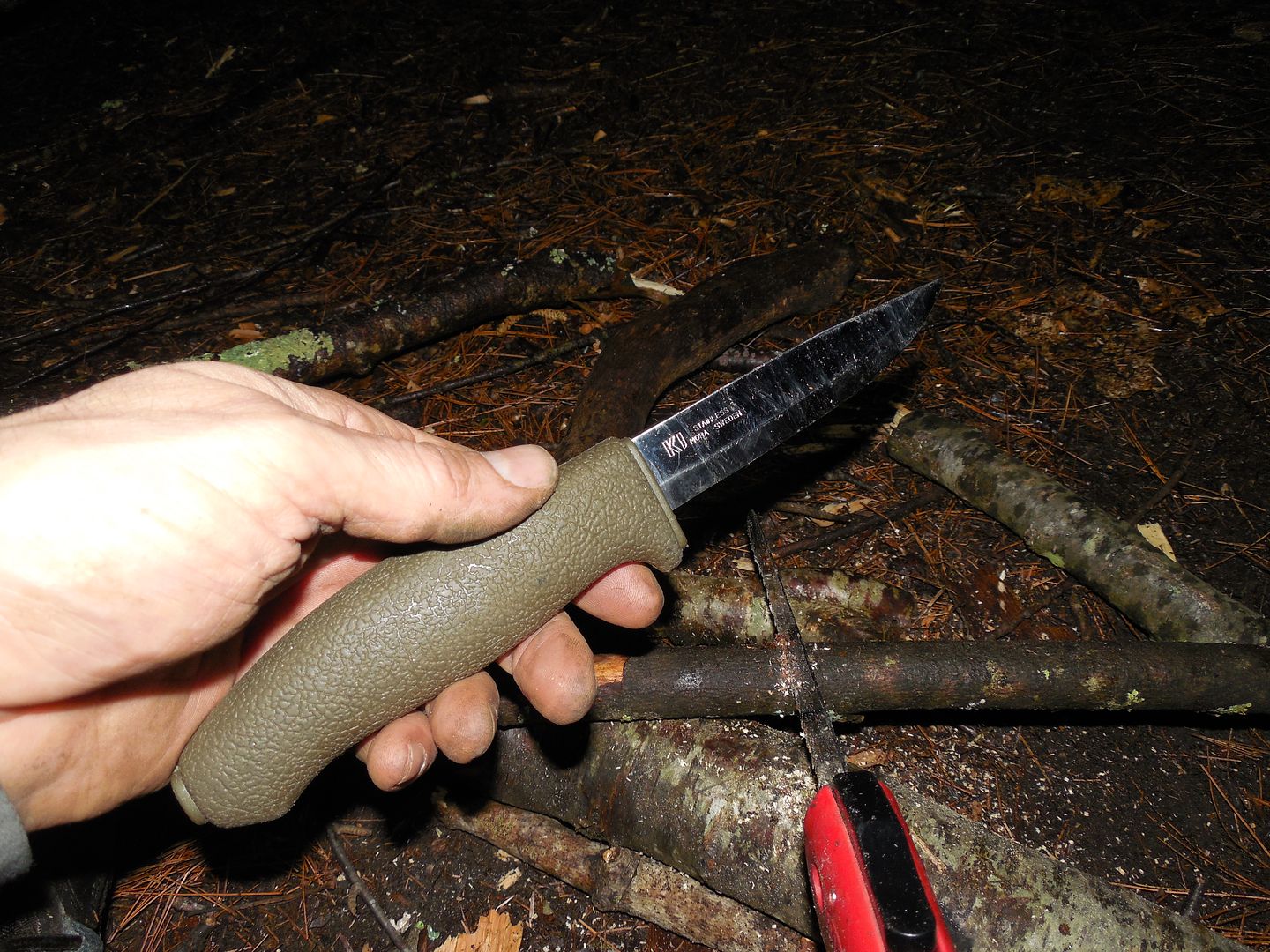
One way to deal with damp wood is to split it. No axe however did have a knife. Yes I am batoning with a Mora. Yes the knife didn't break and world didn't end. My baton was kinda skanky however.
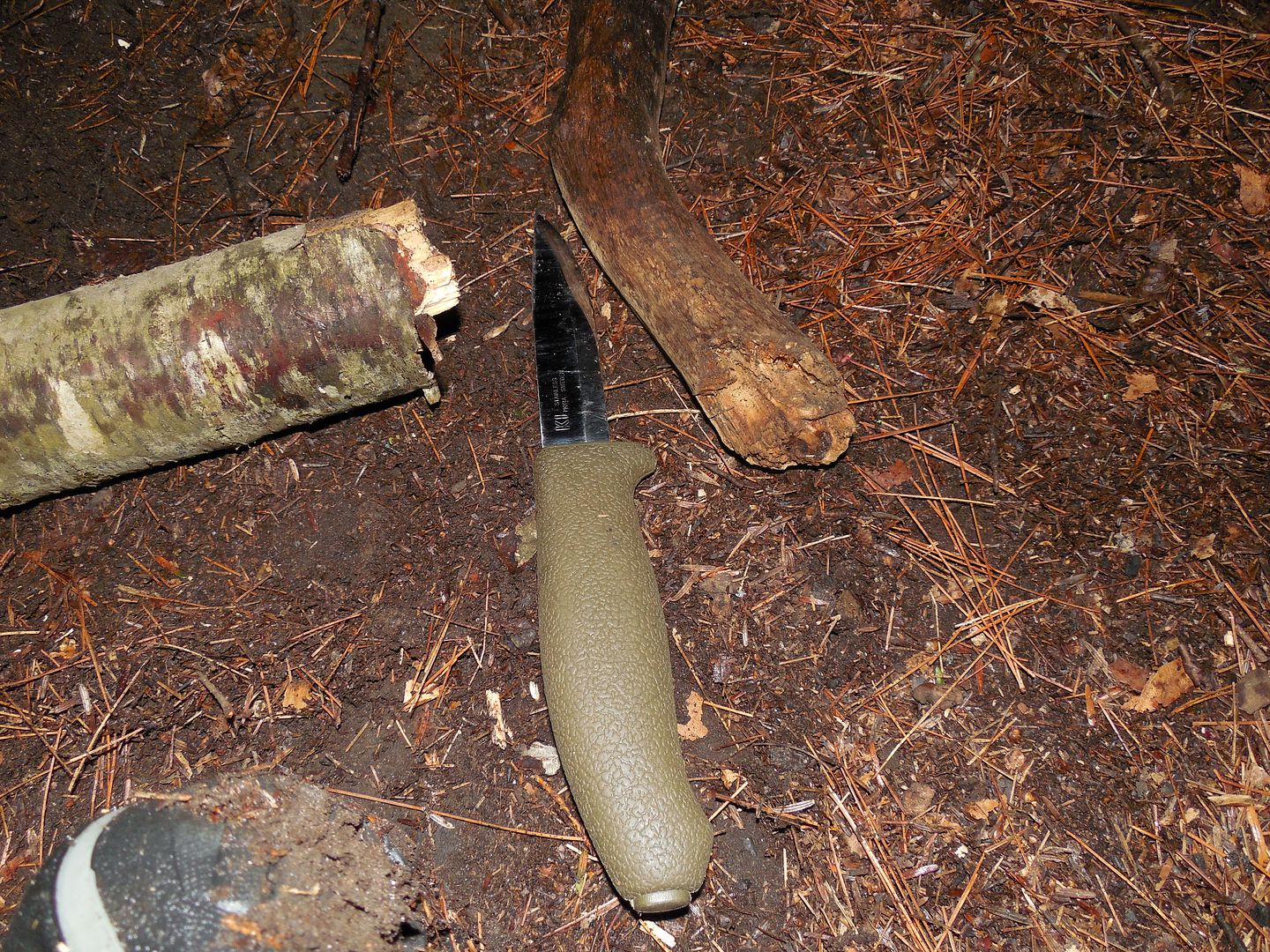
GO!
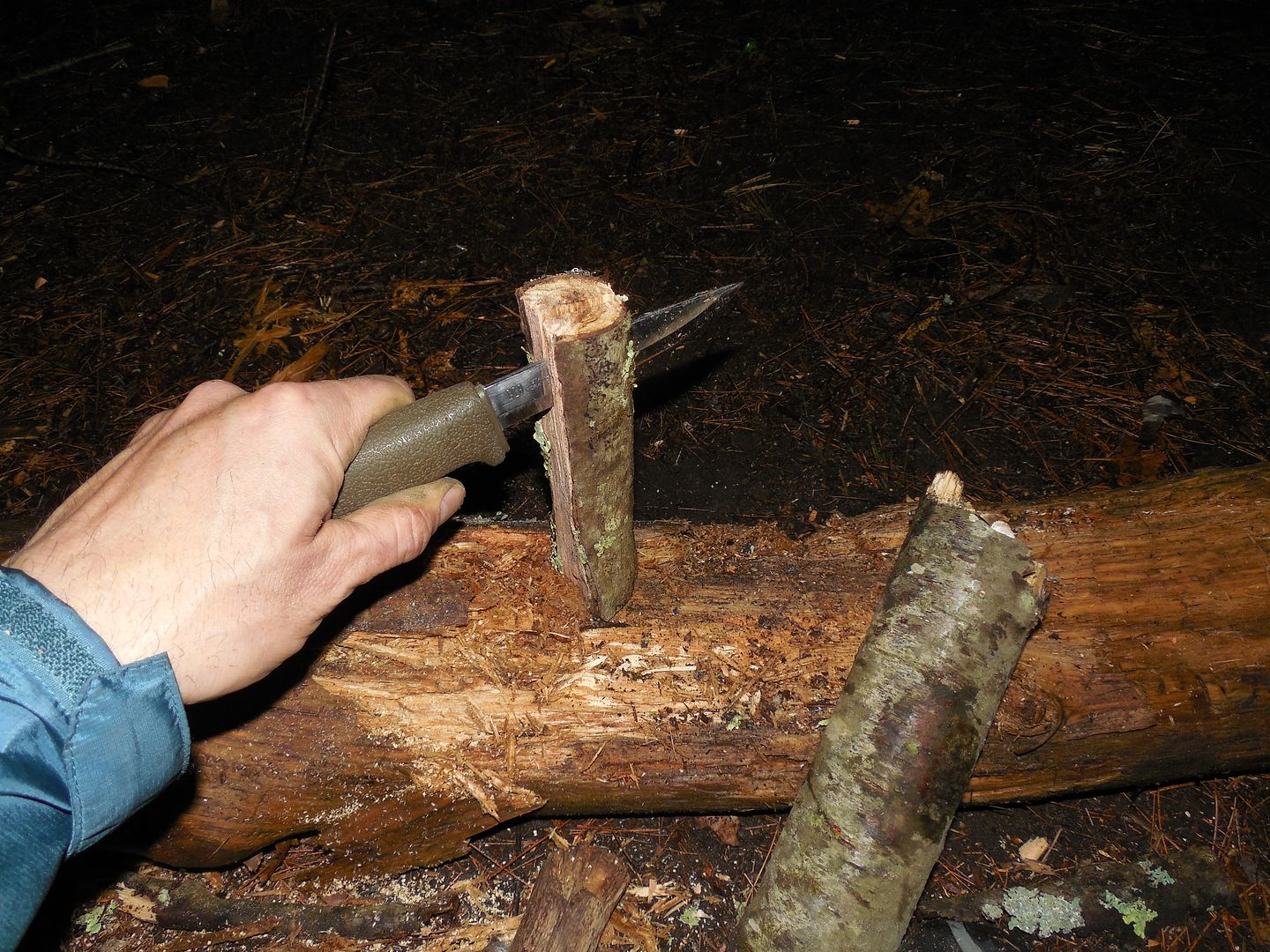
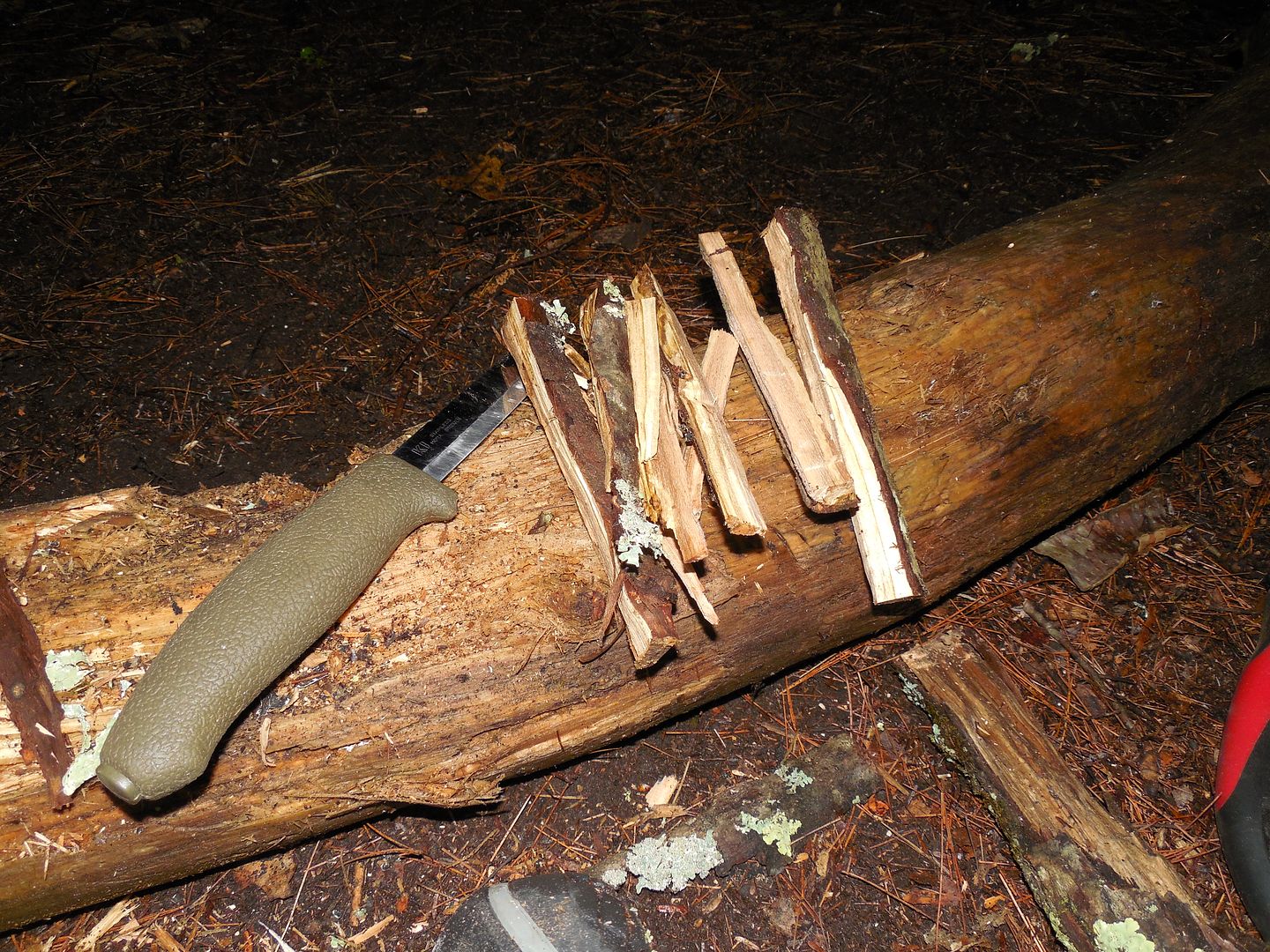
One pro to a small stove being a little wood lasts a long time. The primary con being increased wood prep and stoking. Split wood in this situation is almost a requirement.
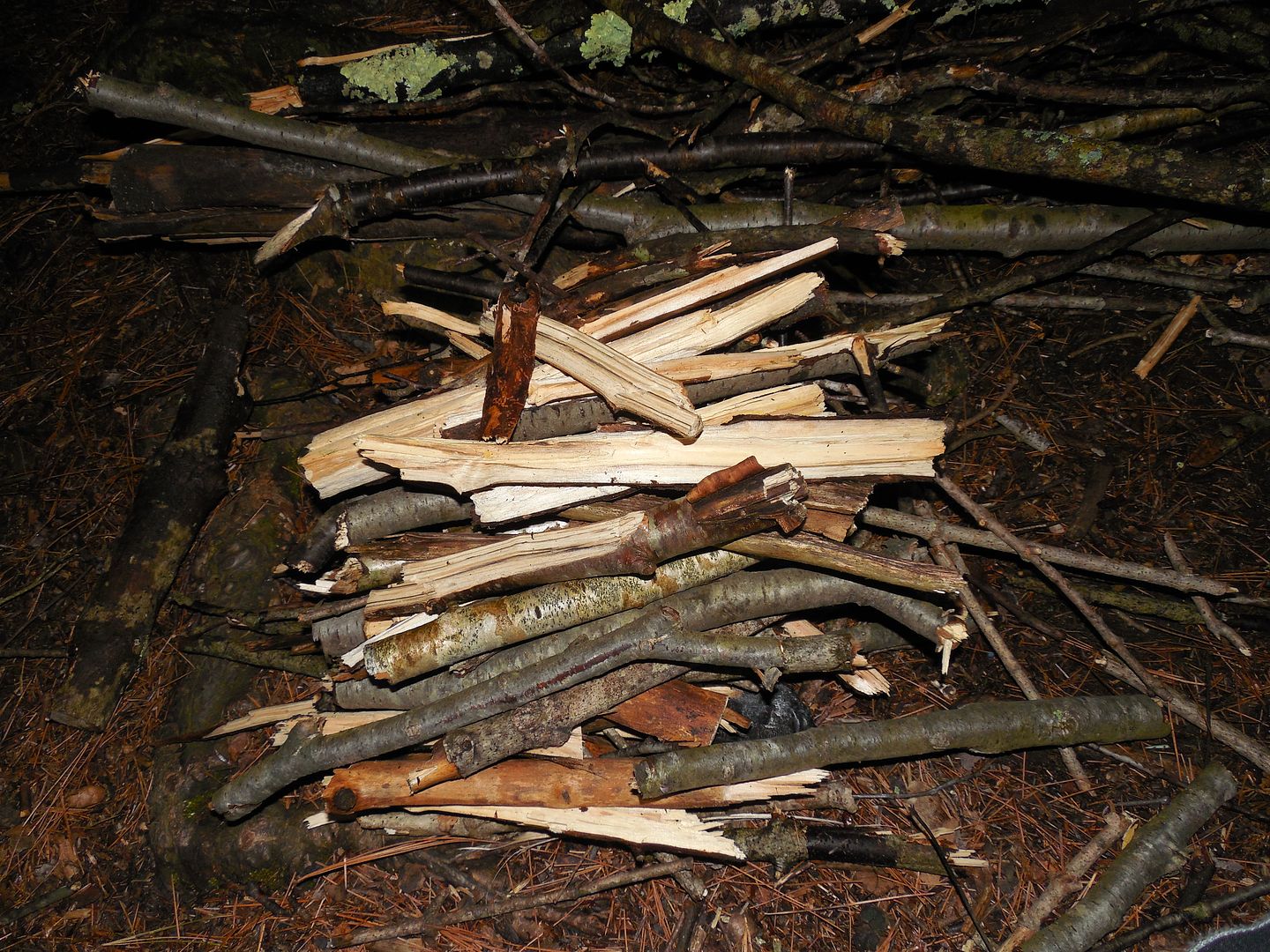
I considered sleeping under the poncho despite it's high pitch even as the rain and wind picked up. I was packing a down bag but had a UL bivy. Also had some water tabs and a bag of cashews. I didn't hike all that gear in just to spend another night under a poncho. I setup the heated shelter camp. Now that's better!
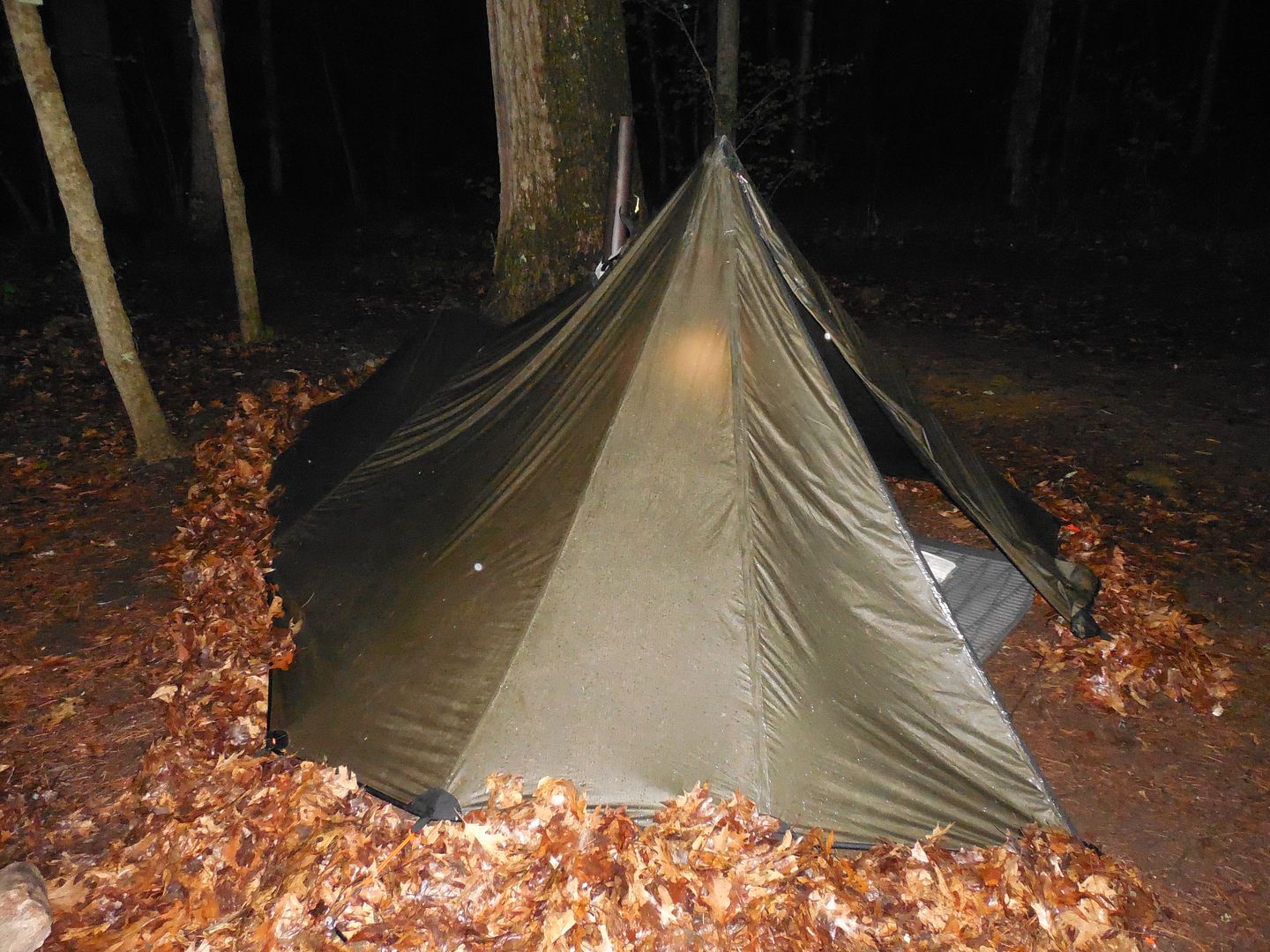

I processed enough wood for the night and into the early AM. The little stove doesn't need much to keep things comfortable in the 40's. During deep winter I would use a larger stove and more wood.
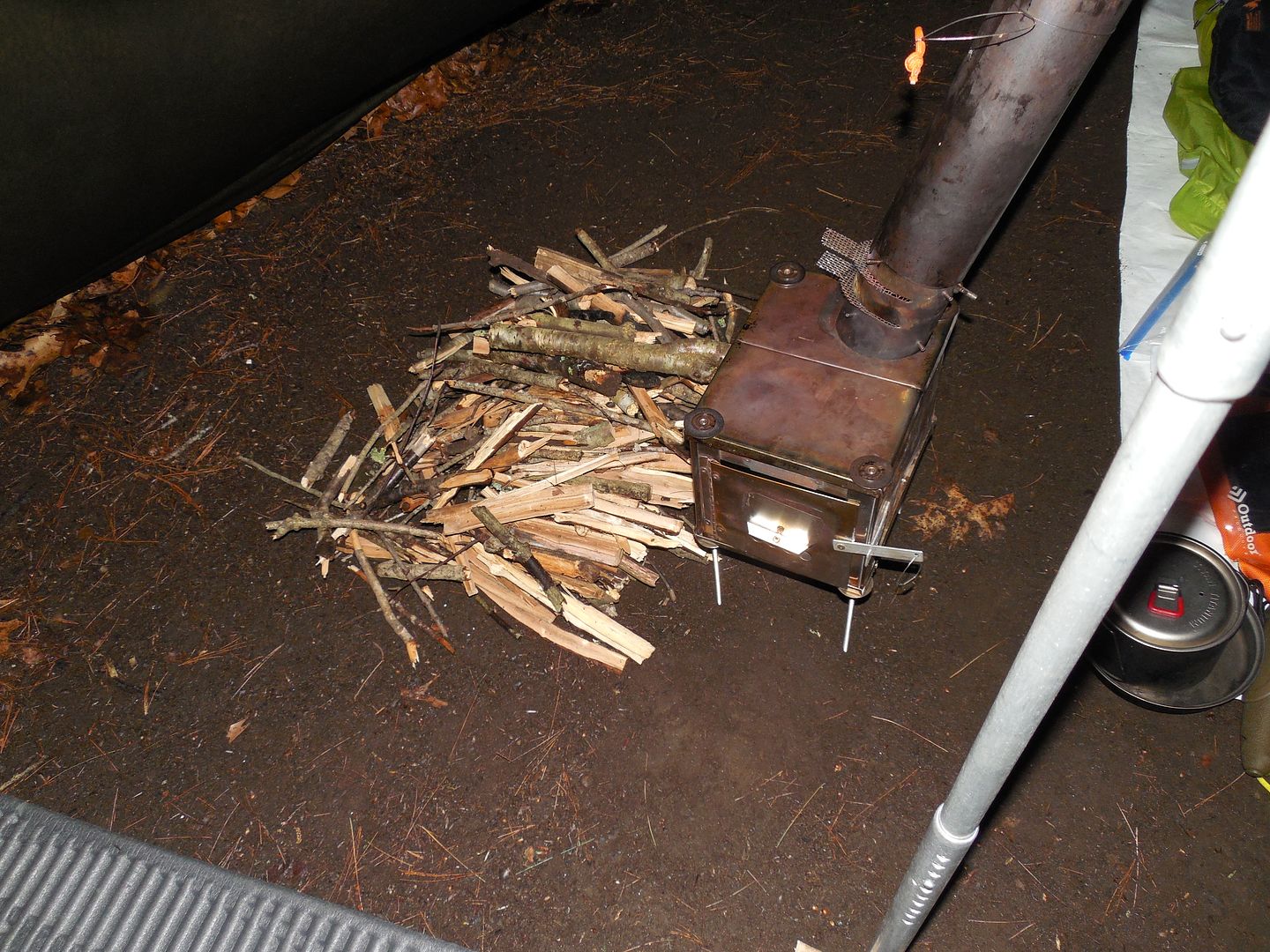
Stove on one side, sleep system on the other. Sometimes when packing a down bag in a single walled not breathable shelter I employ a bivy. This one has a water resistant DWR top and waterproof sil nylon bottom. So I need not worry about condensation. Shelters are a bit like knives, axes, guns etc etc etc. Improper use can have less than desirable results.
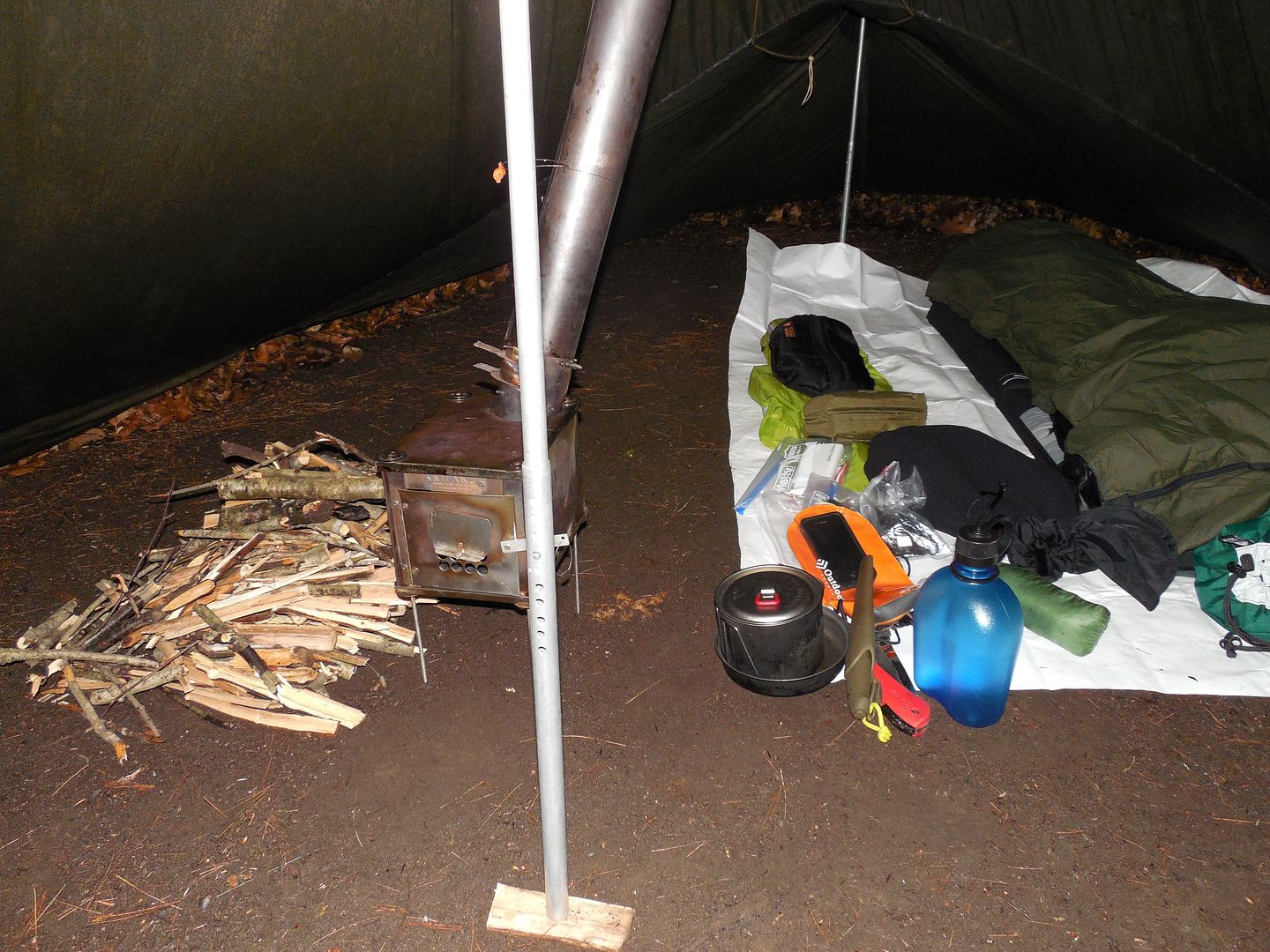
The wood was wet but splitting made all the difference.
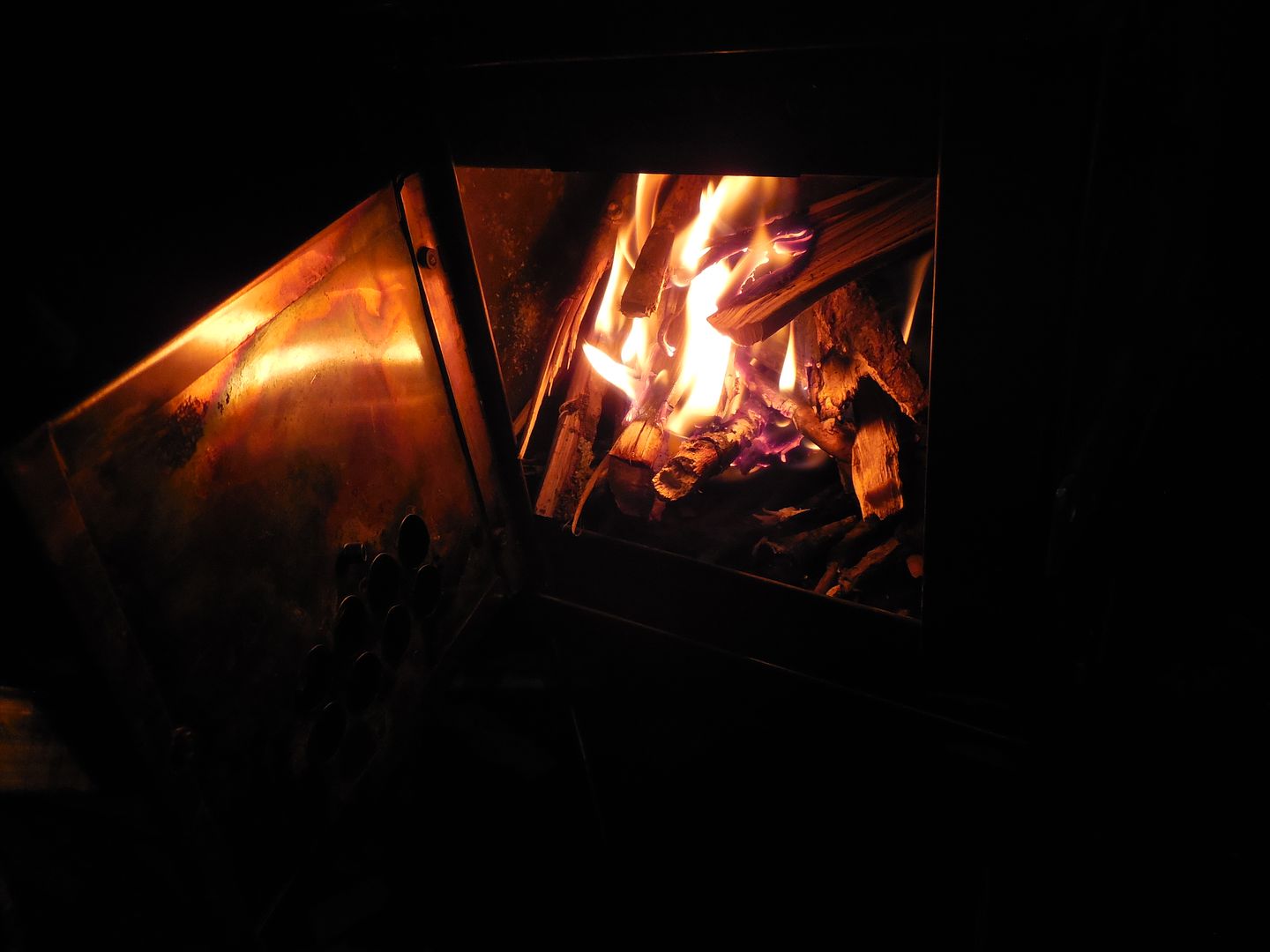
Boiling the water. I like to get the pot on ASAP.
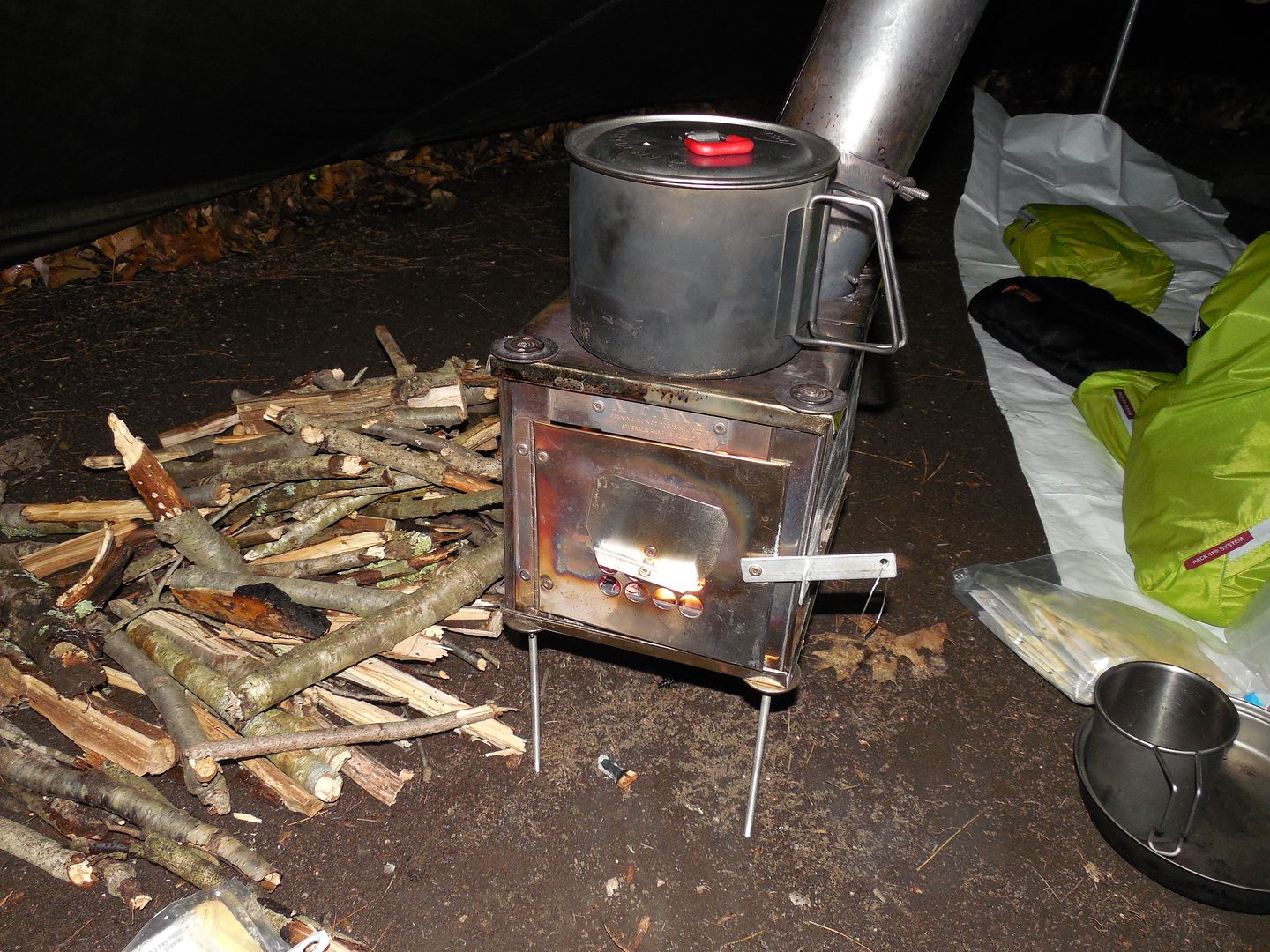

The traditional bacon. During summer I wouldn't pack something like this for longer range outings.
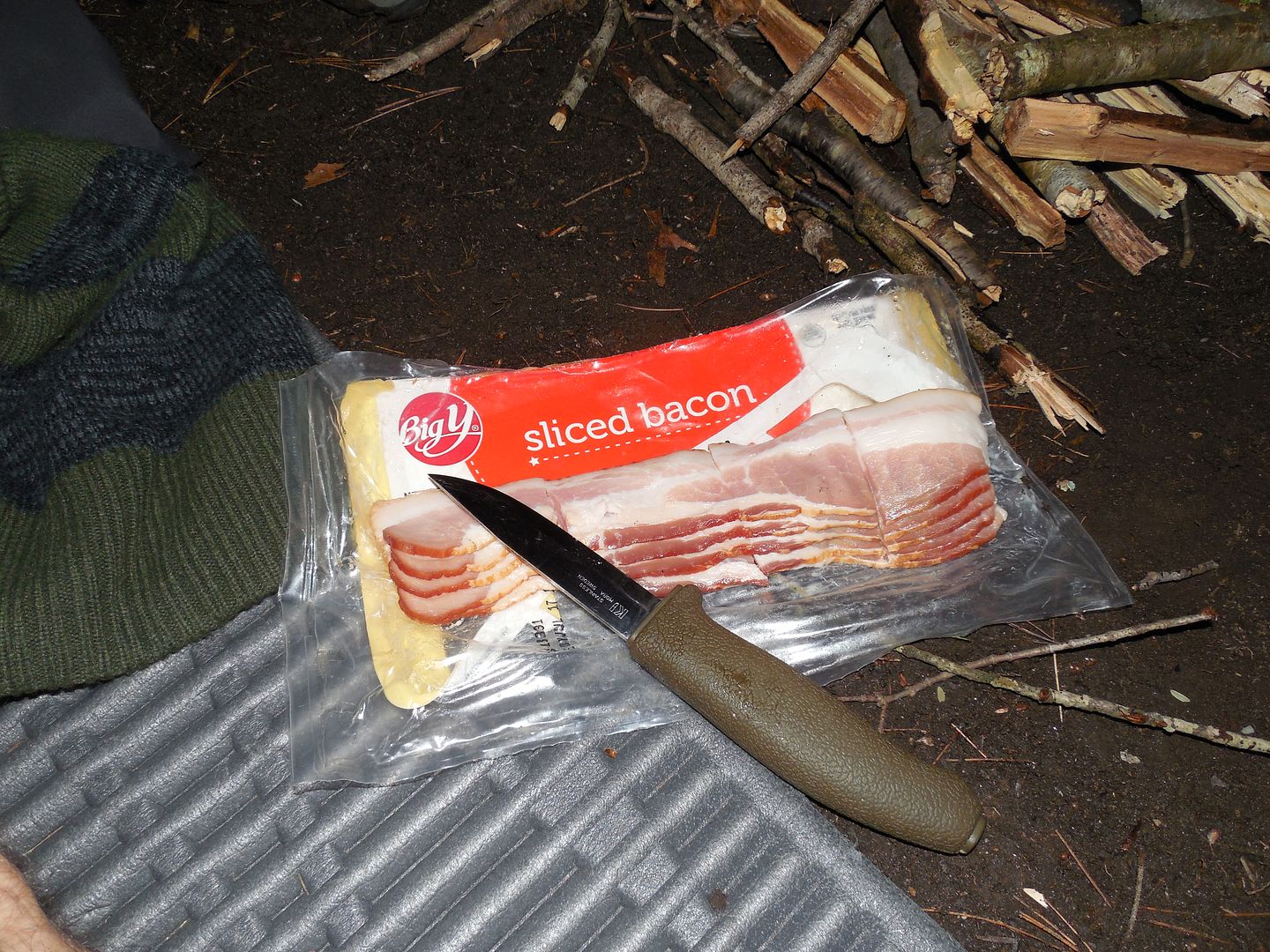
UL DWR bag liner is nice for resting in the front of the shelter as the water comes to a boil. Inner liner then bag then outer bivy are parts of my sleep system but don't always use all the components

Dinner is ready.
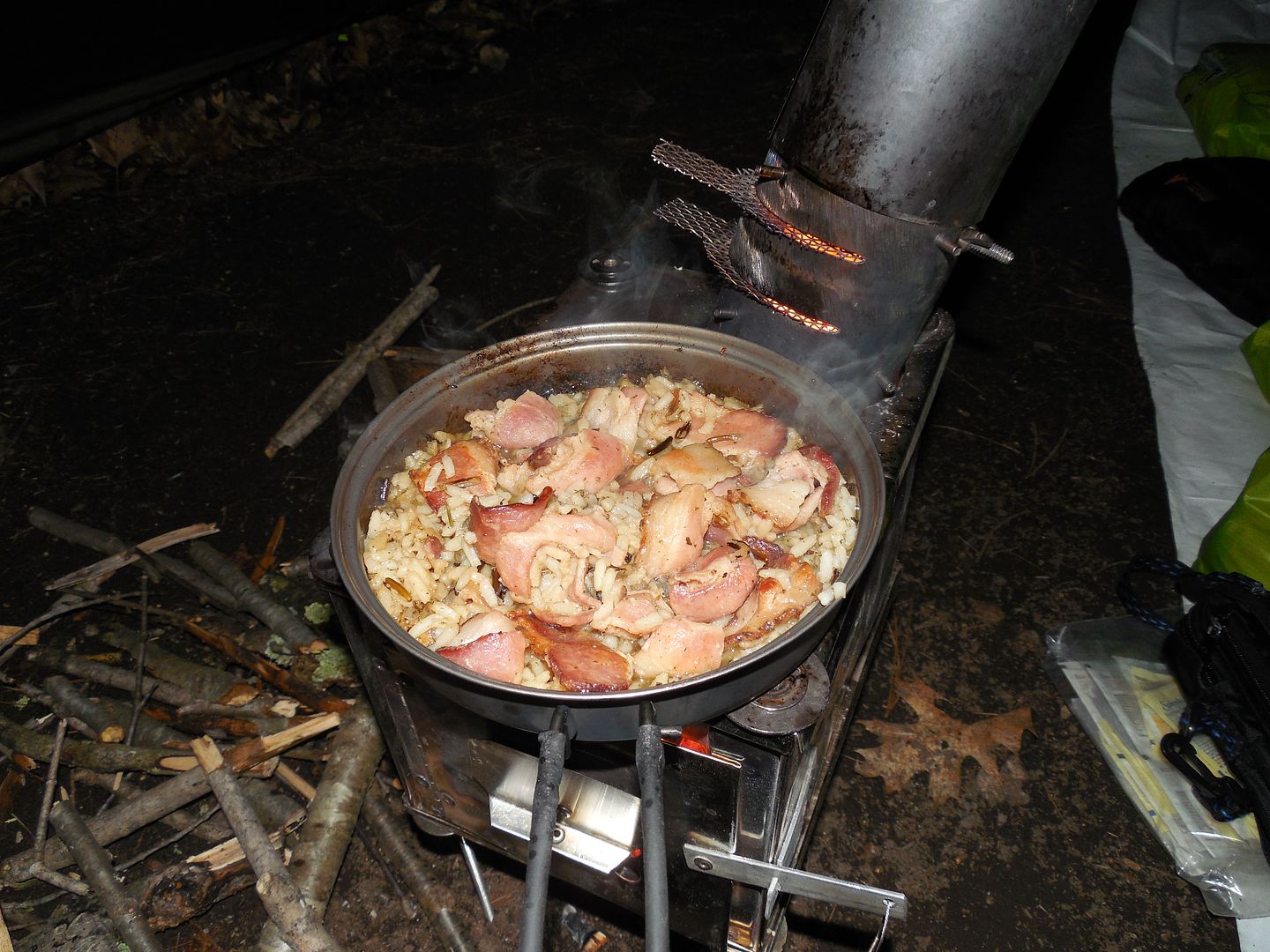
Got too hot for the bag liner. I like to raise smaller shaped tarp type shelters off the ground to increase floor space. Then I cover the gaps with leaf litter or snow. This allows me the stretch out in the front without touching the walls.

The old stuff sack for a pillow trick.

Yes it rained all night.

End of part 1. Below is a video for part 1.
[video=youtube;BcDIqpt0ufc]https://www.youtube.com/watch?v=BcDIqpt0ufc[/video]
Part 2.
Why do I say water, wood and power in that order? Because in my view that is the order of importance however there have been occasions when getting the stove fuel was temporally more important than acquiring potable water. However usually getting the stove running first was a requirement to get water either by boiling or melting snow. The wood situation was looking pathetic.
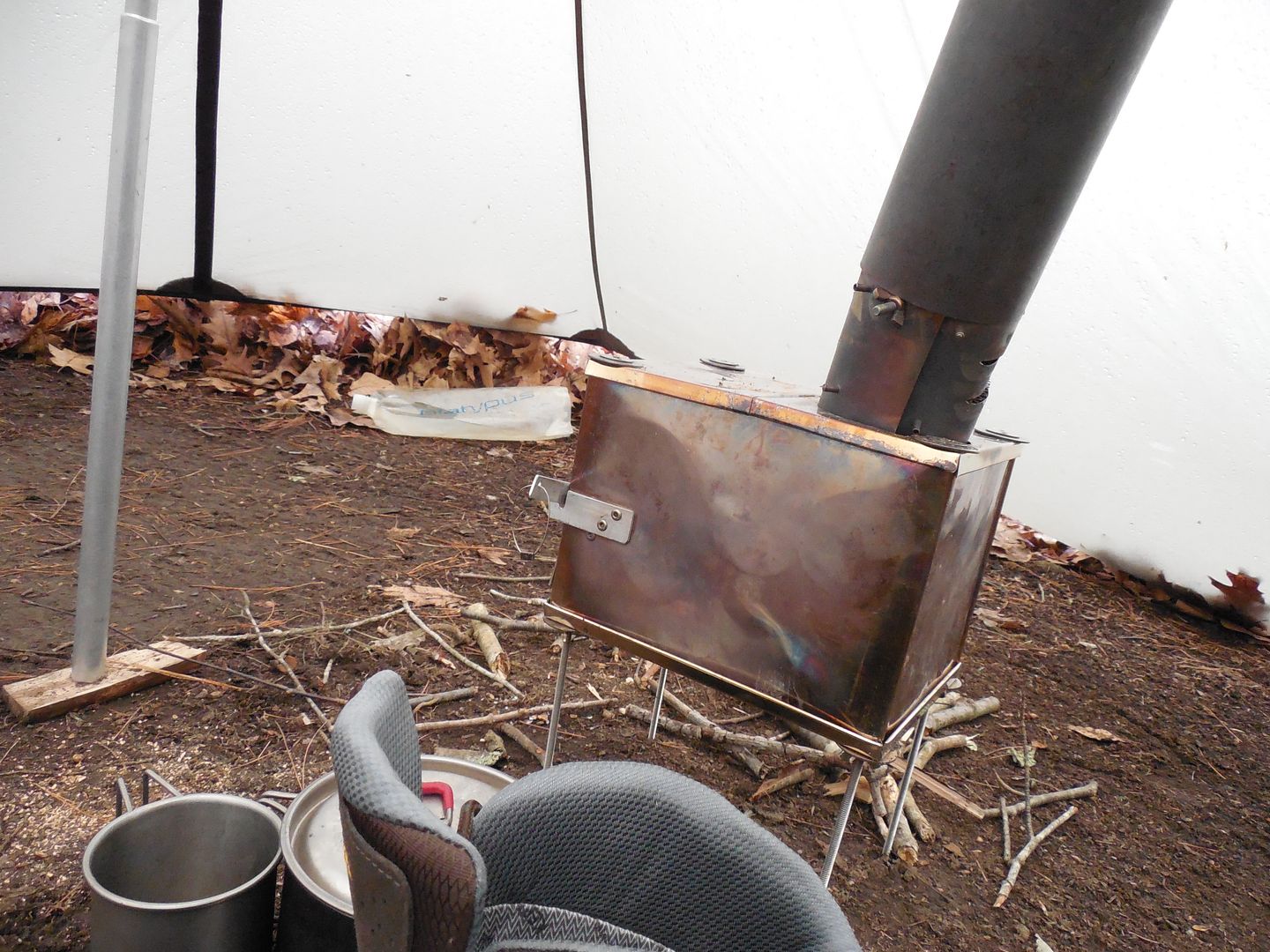
The bivy did a fine job keeping my bag dry. I used a DIY Tyvek ground cloth then a Ridgerest wide closed cell pad and finally a Downmat 7XS insulated inflatable for protection and insulation from the ground. I use the closed cell pad for other things but always move it back under the Downmat before going into the bag.
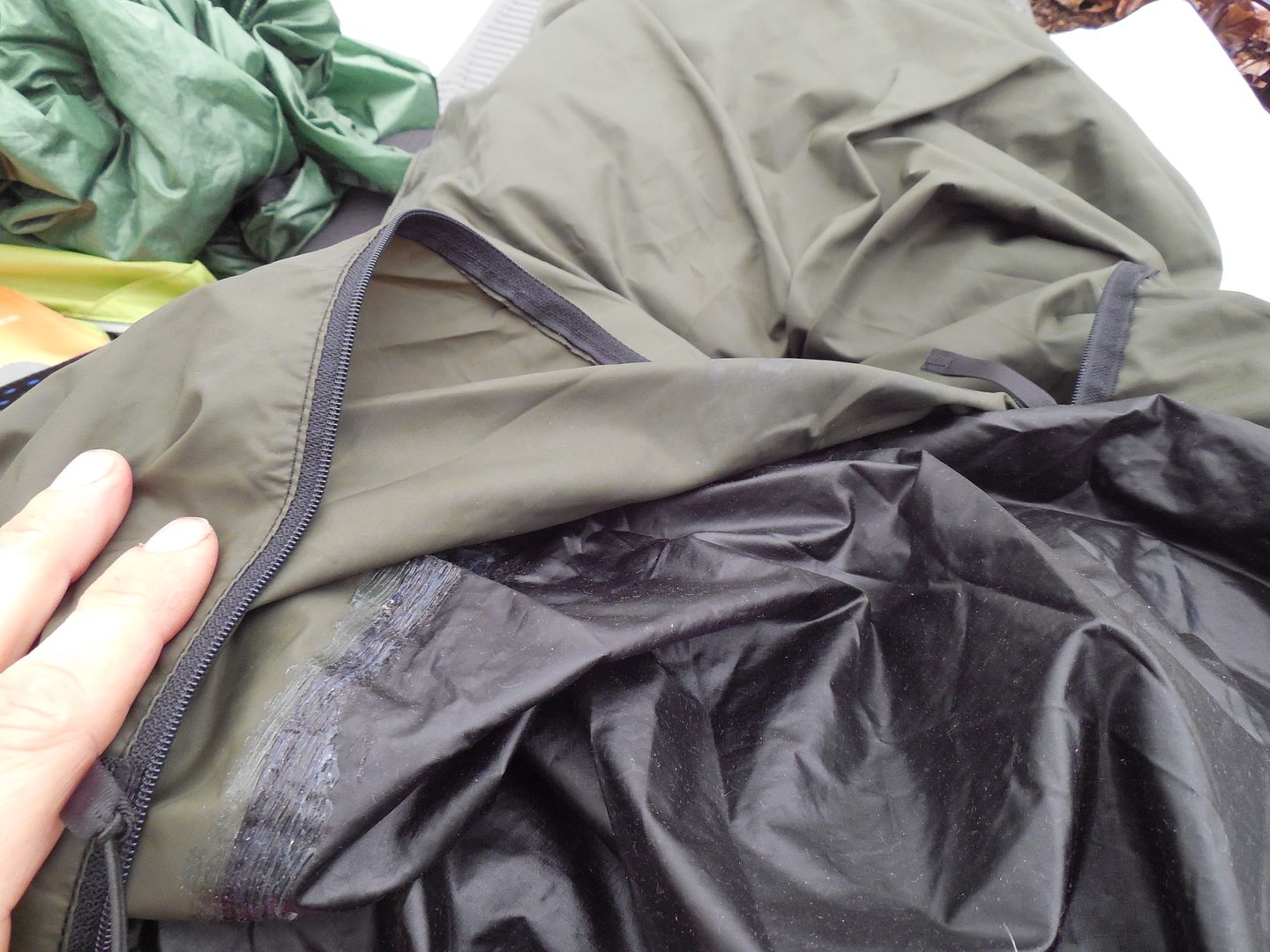
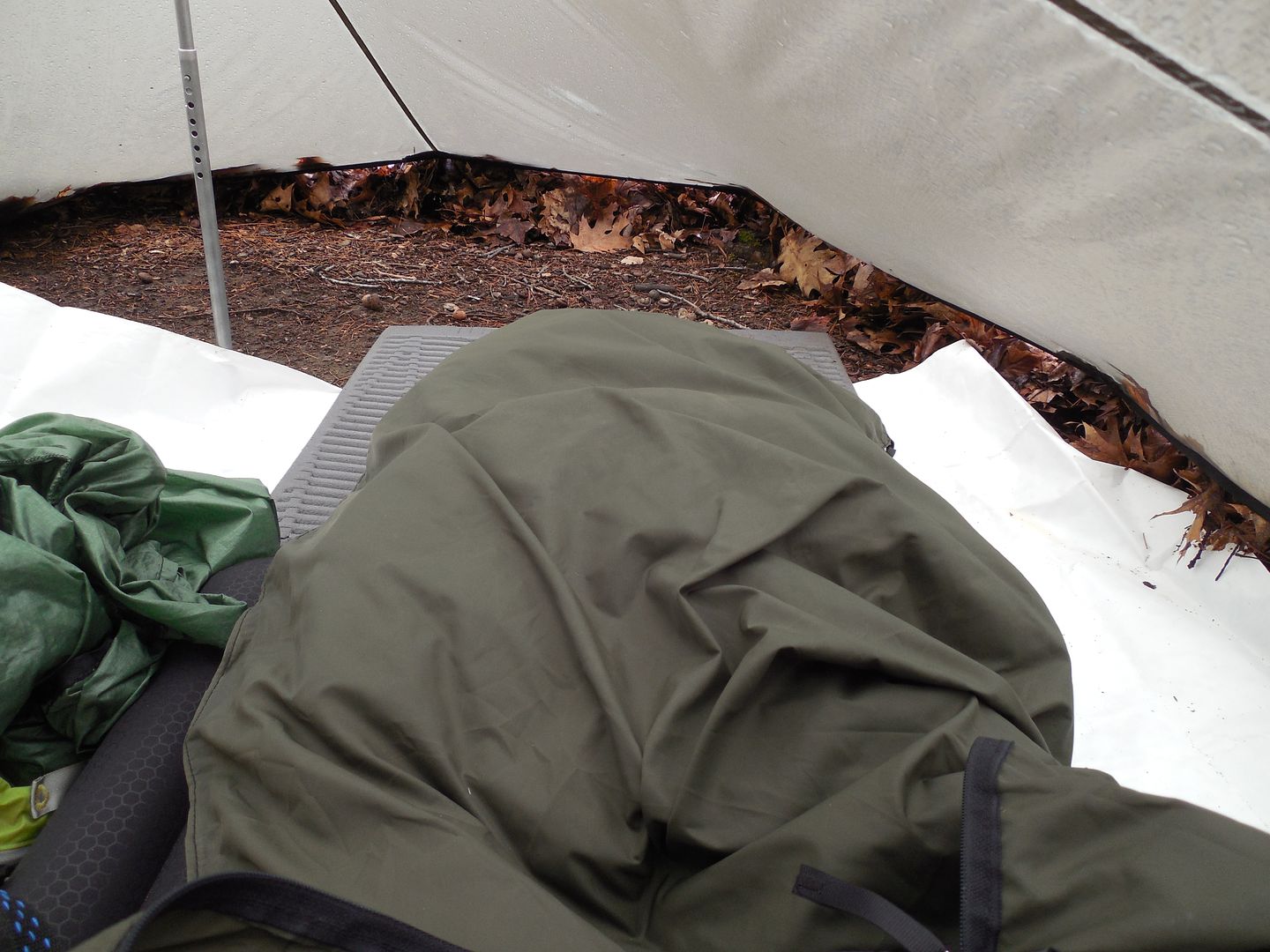
Scrounged up some fast wood by the under tarp processing station to get the stove running as needed to boil water and dry things out.
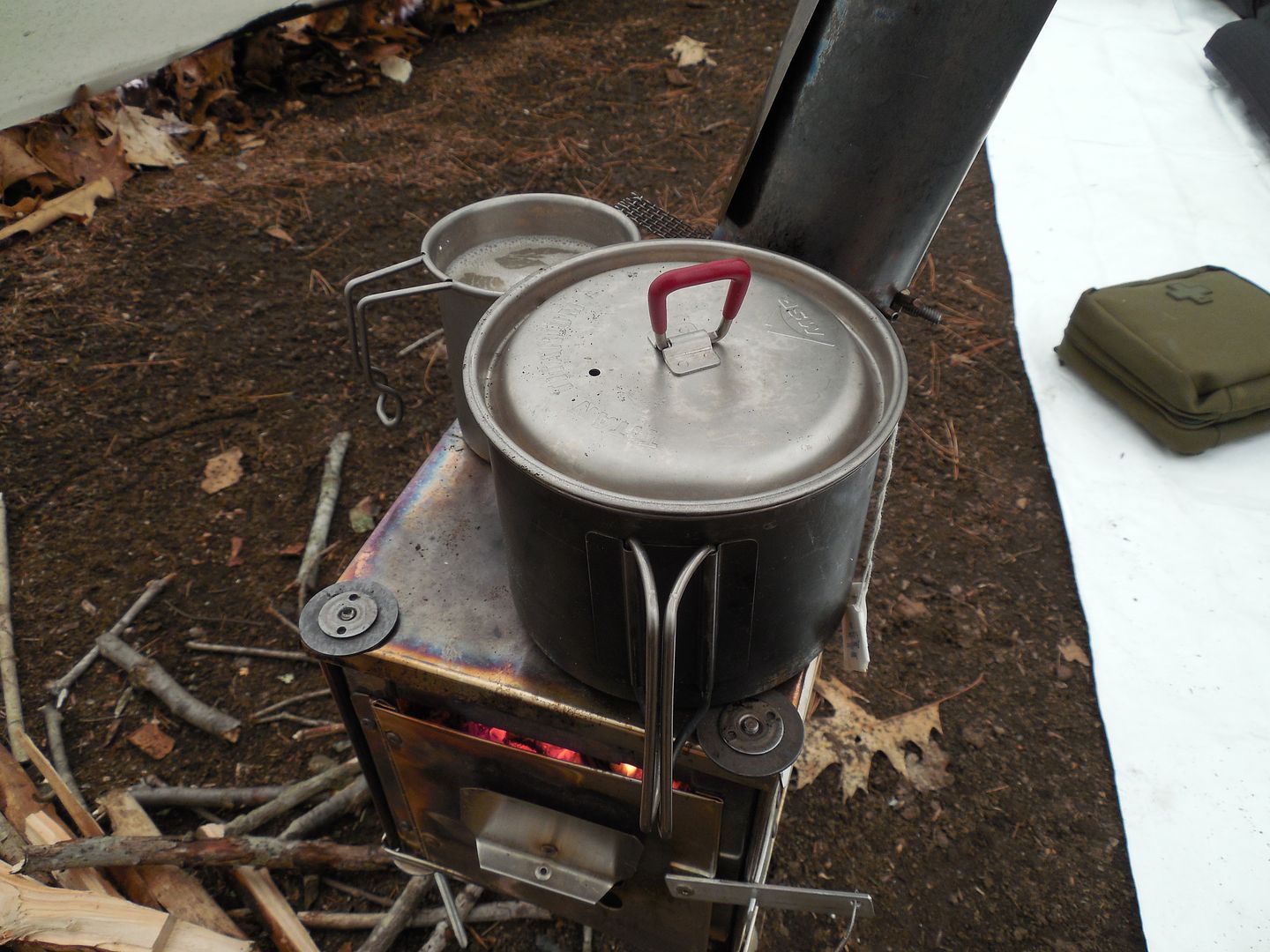
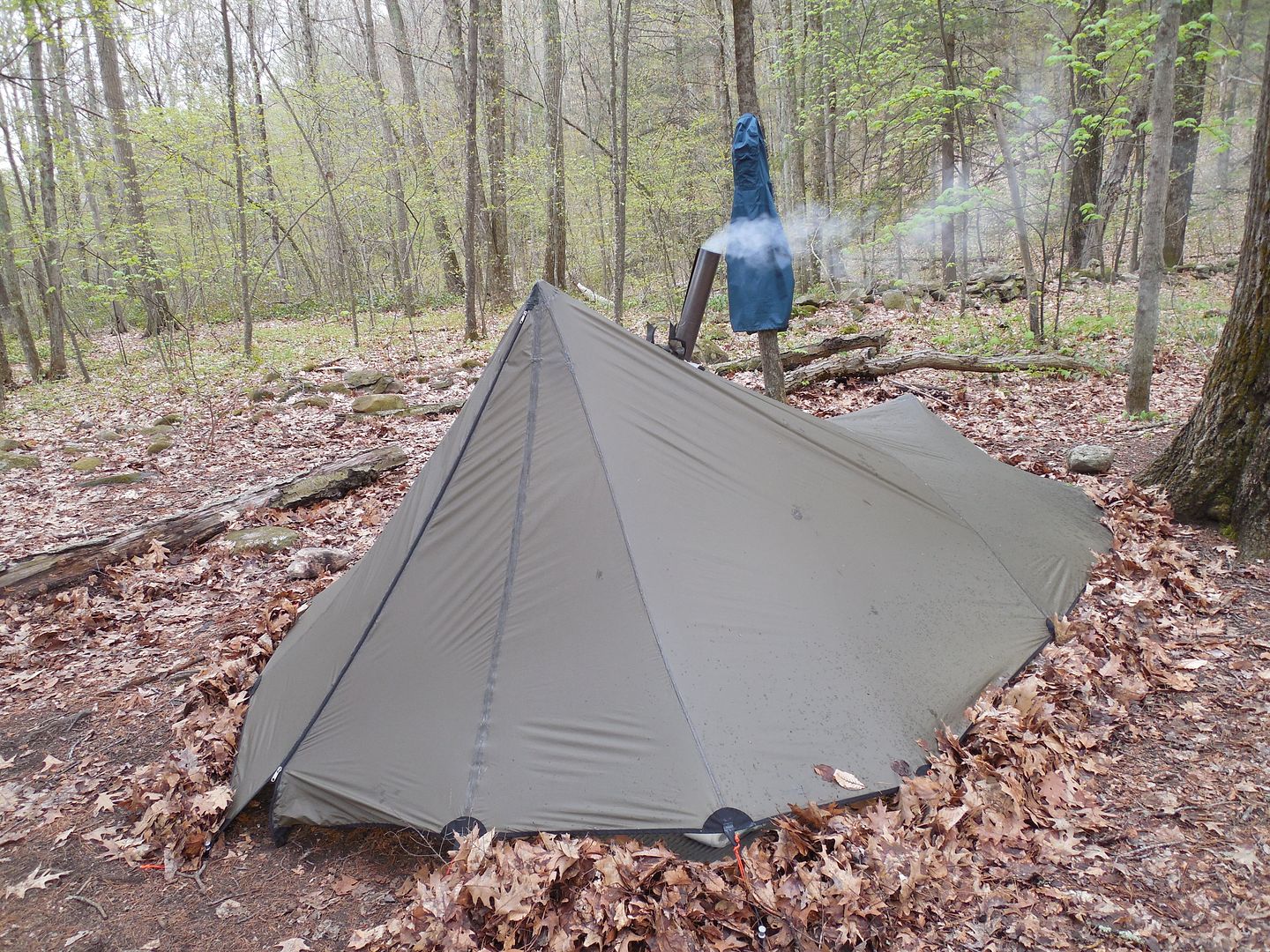
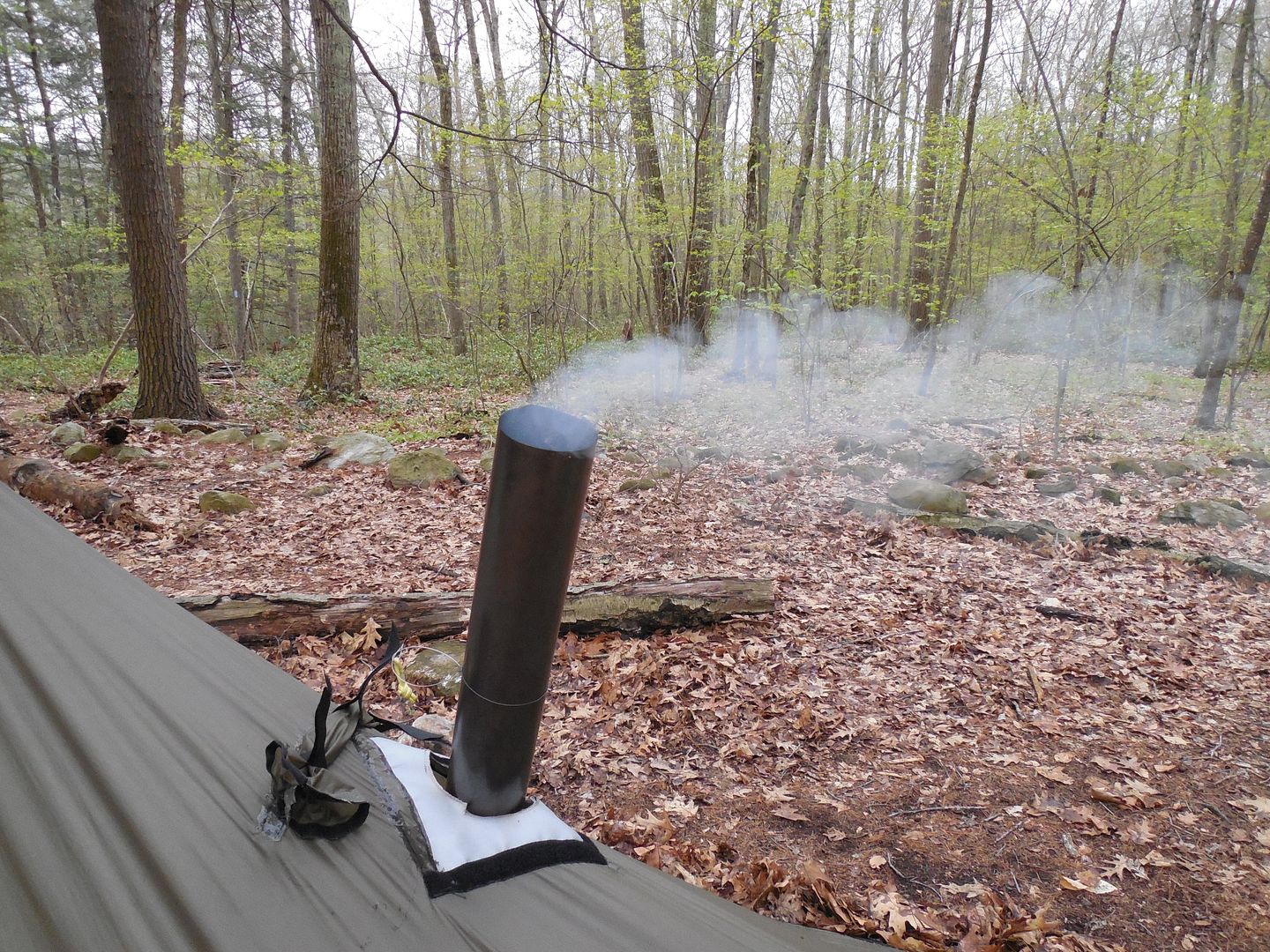
I still had some water from the day before but was running very low and as water is often my number one priority went for that first. Water is needed to drink, cook and clean. Without it no camp is sustainable. Water very often is everything. The same lesson is applied to my BOB and other preps as well. You're only as good as your last hydration event.
UL backpacking hydration system.
1. Two 70 oz Platy bags. One is used for not potable water. I probably should label them in the near future though never drank from the wrong one because they're immediately separated from each other. Still I am a goober so it's only a matter of time so going to mark them.
2. Water tabs. I am getting low but have a new package for restocking.
3. Sawyer Mini and various attachments. Thinking about packing the larger Squeeze instead however will compare the two first. Have one never opened.
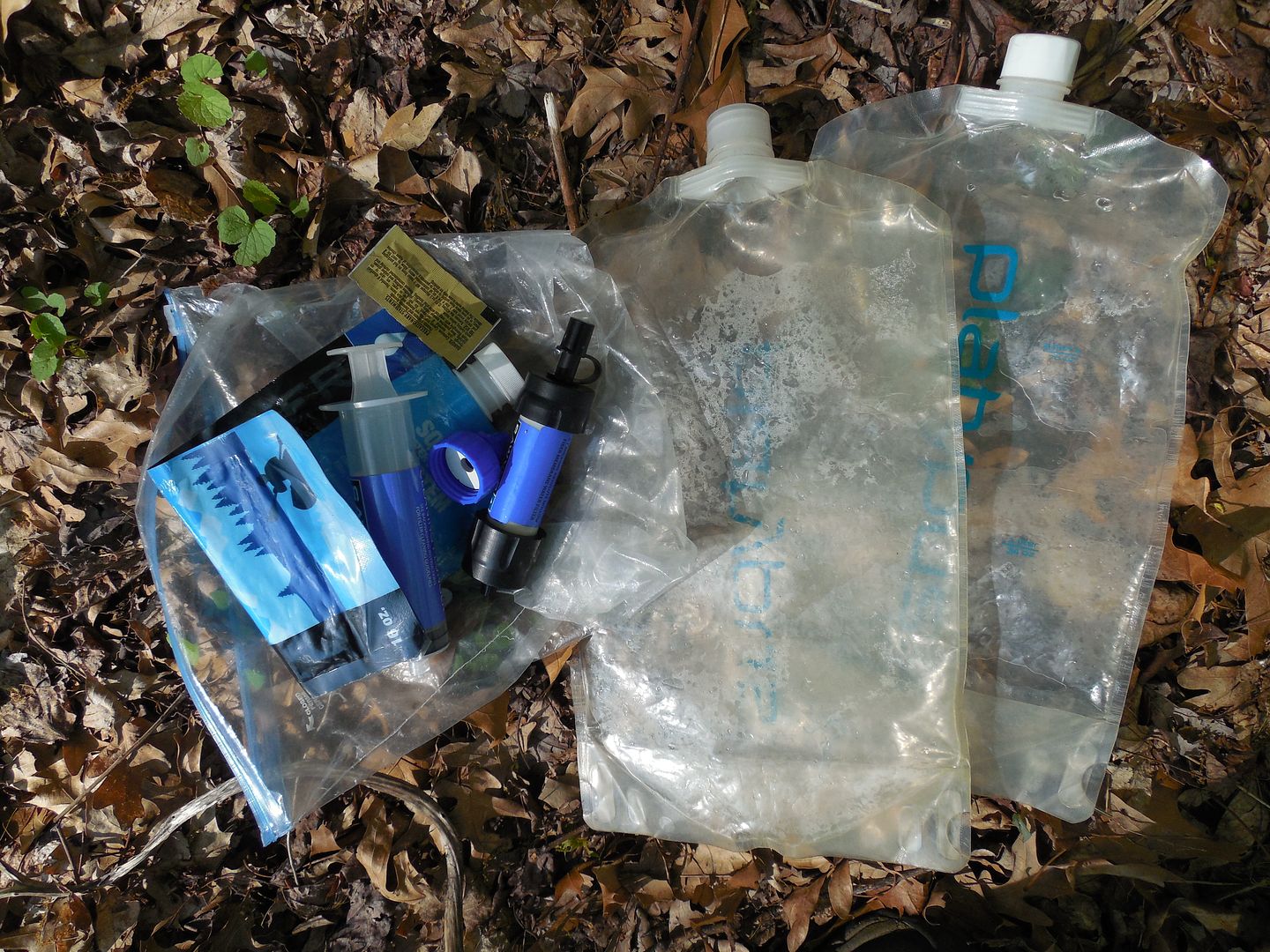
4. Always have a hard canteen as well. In this case a 34 oz Oasis
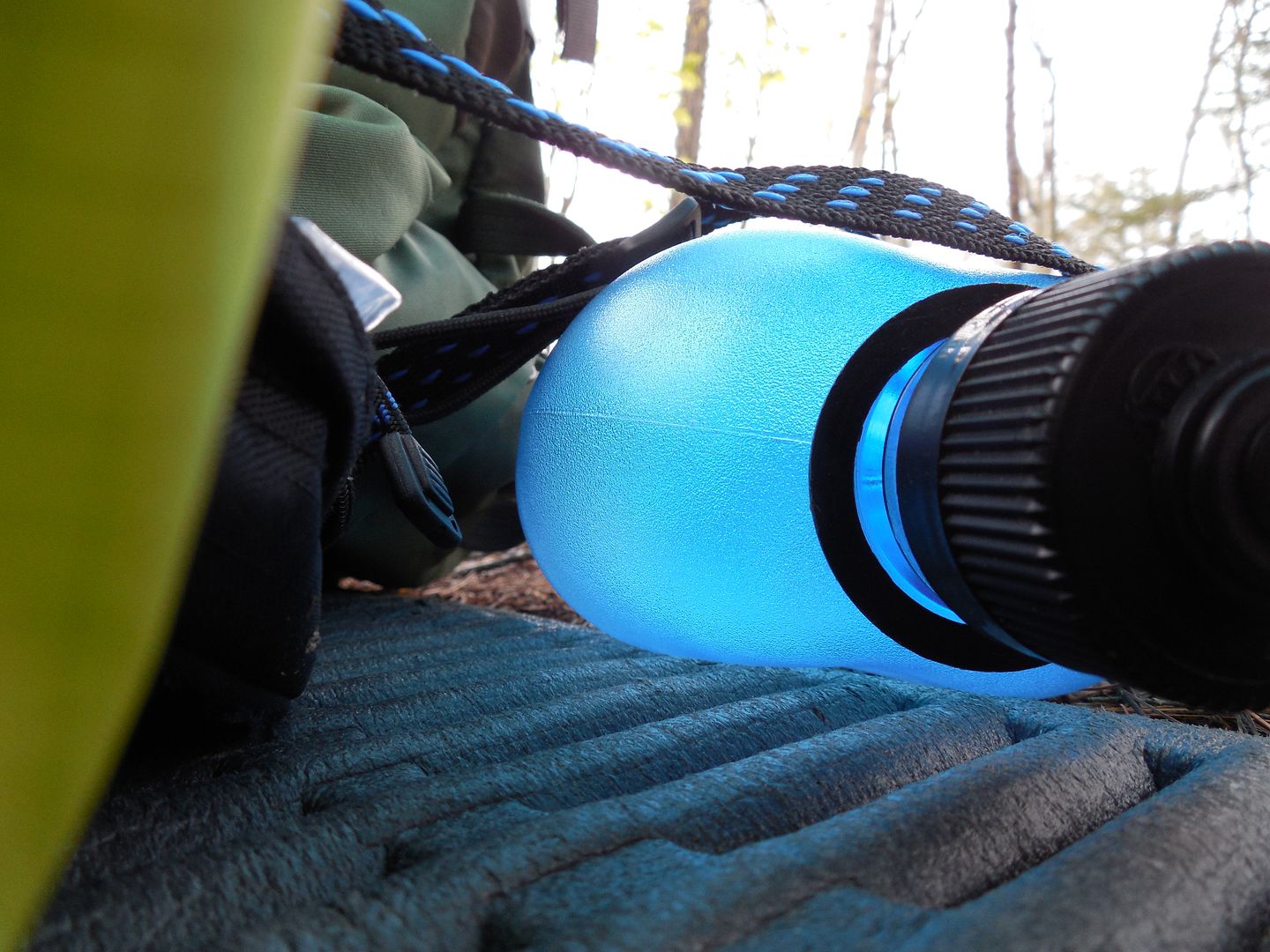
The backpacking hot tenting camp water source looks good!

Potable water kept near the Paratipi.
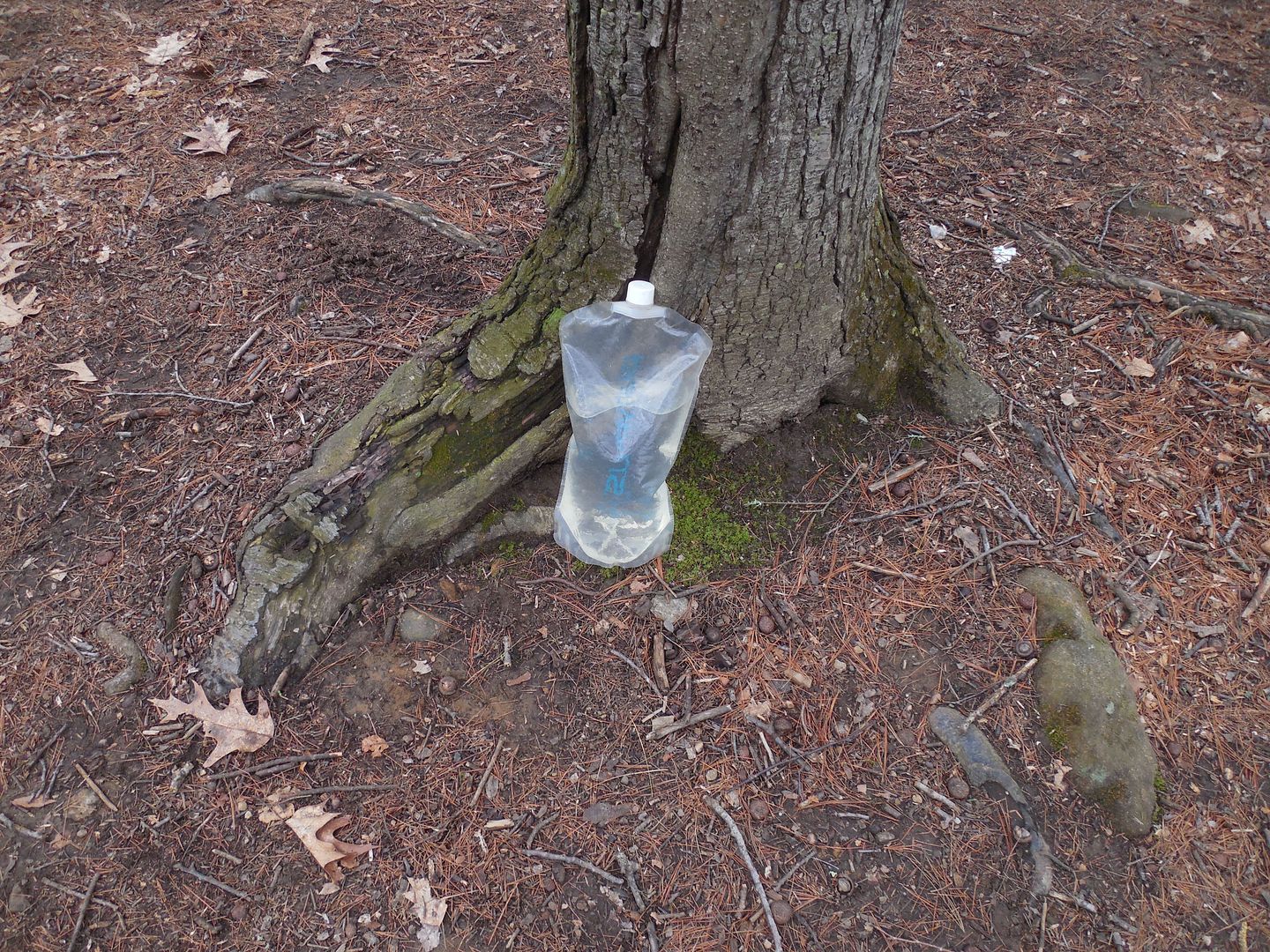
Not potable used to clean mess kit and later for a hot tenting bandanna bath. One of the many pros of a hot tent is the ability to clean up and dry off surrounded by hot dry air. Also unlimited warm water helps. Nice clean pots and pans with bath water waiting to be heated.
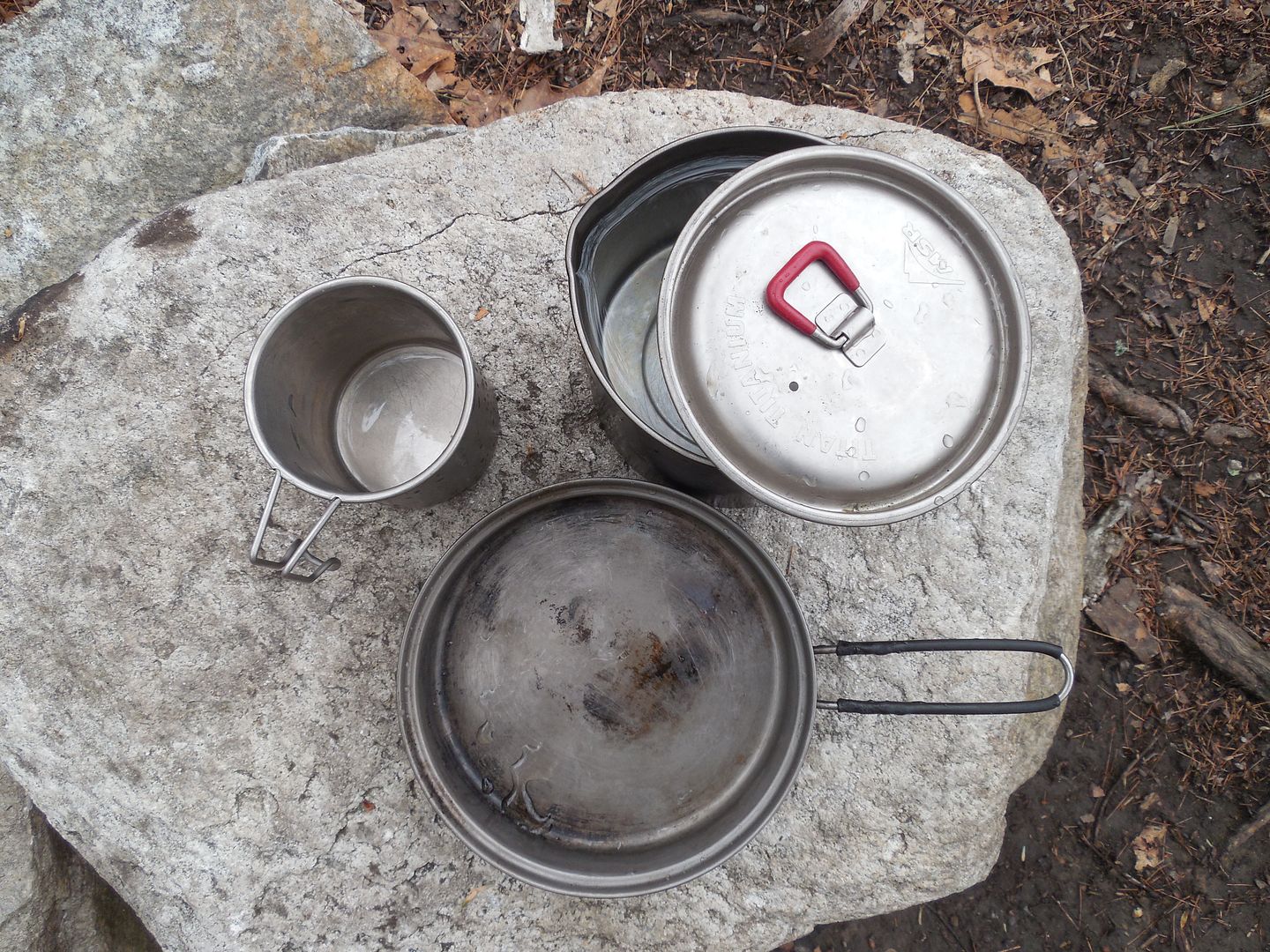
Now on to the wood processing center.
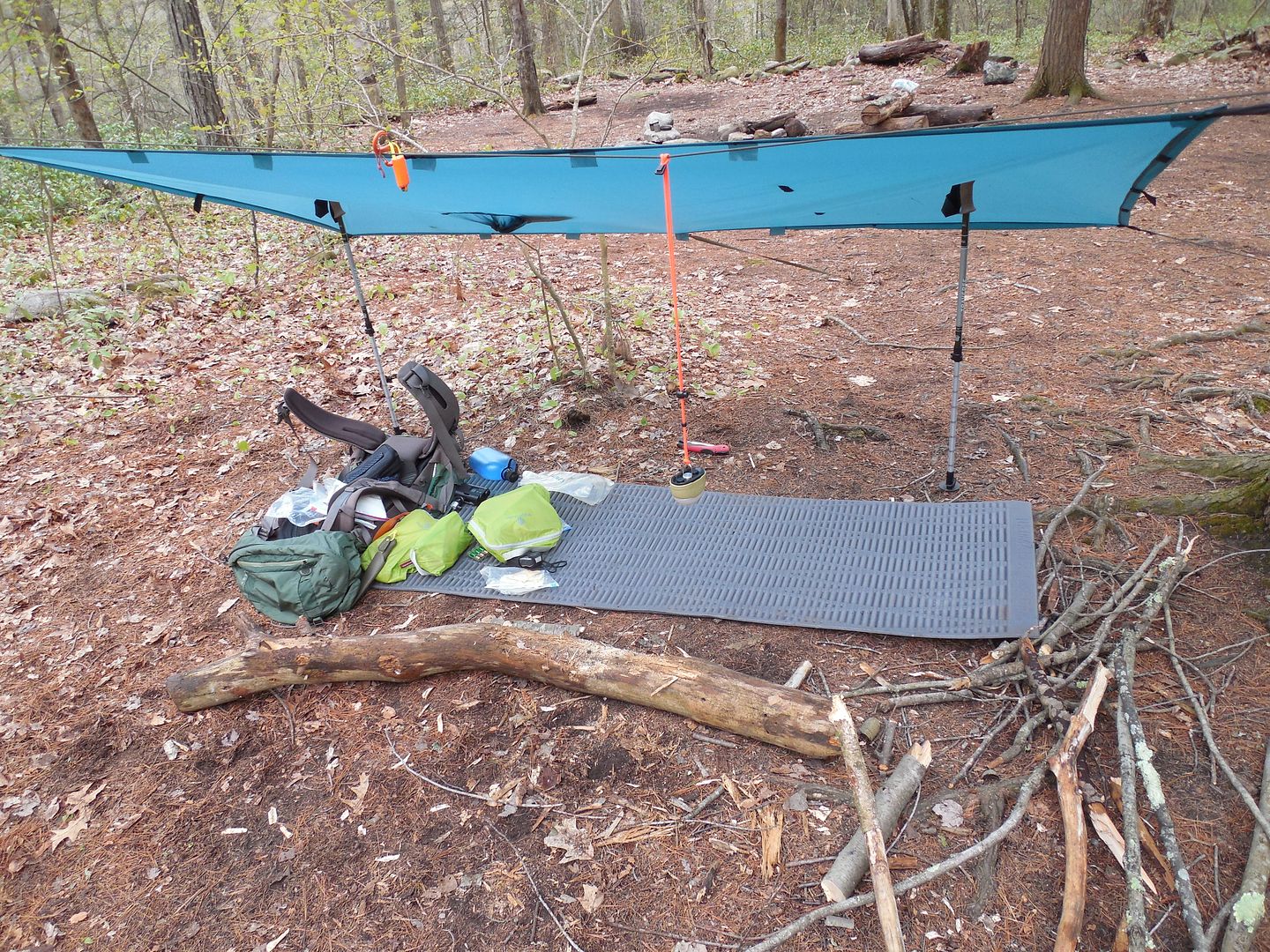
This is why we tie a poncho neck off when used as a tarp.
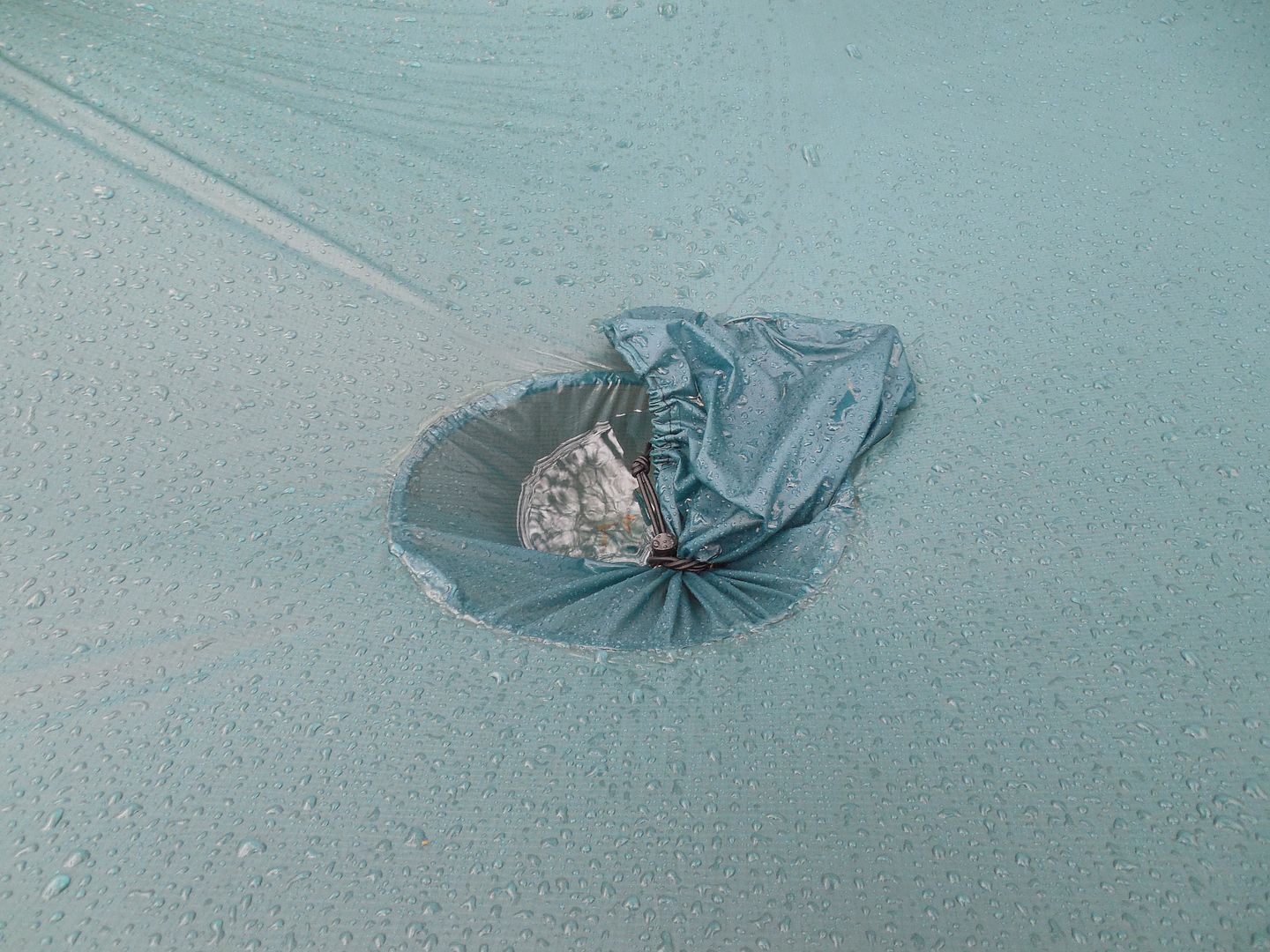
Mora 746 one of my favorite Mora pack knives and Felco 600 saw doing what needs to be done. All the wood was gathered off the ground to reduce moisture as much as possible.

That should be enough for late afternoon till the next day. The stove doesn't burn much.

So how is the power going?
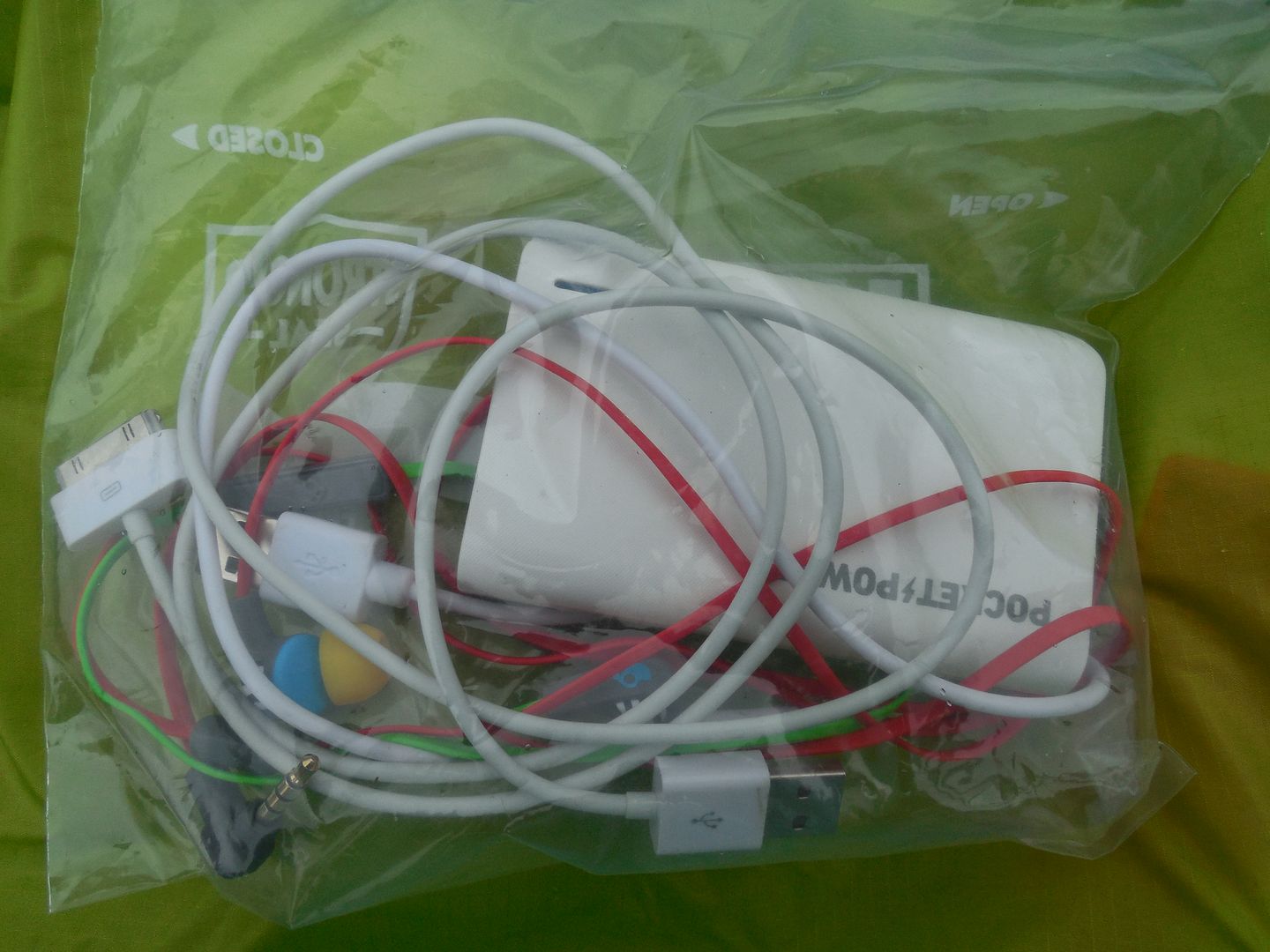
I used the USB power bank to charge my phone and batteries when applicable. It can also run some of my lights. For this outing everything is using 2XAA. Had more than enough extra batteries. Without lights the hot tenting campsite would be less effective.
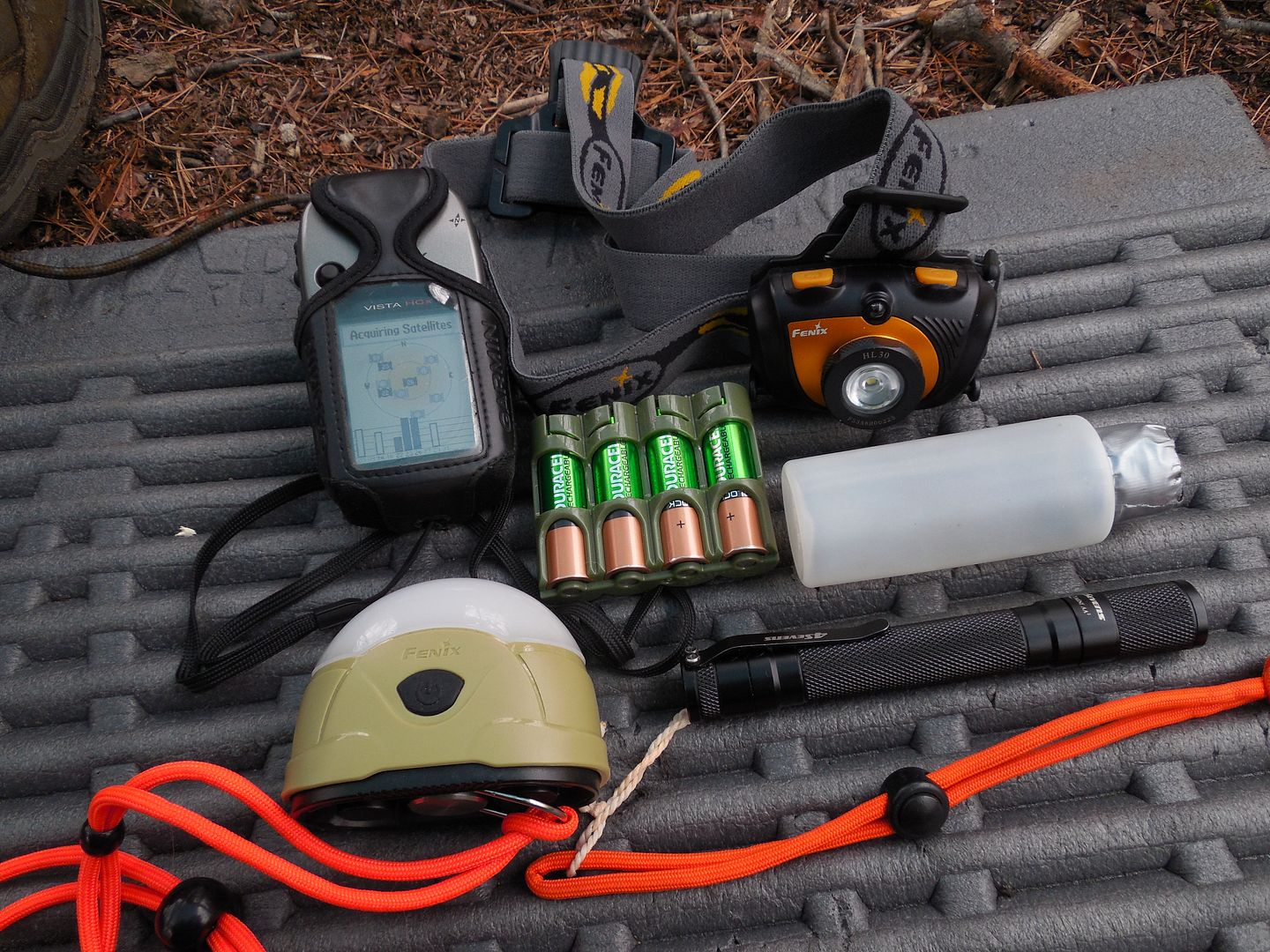
Time to put the wood in the tent then start the water for the camp shower. Again this camp runs on water, wood and power. I like to put the wood around and under the stove to take advantage of the dry heat. Every advantage and use of energy helps.
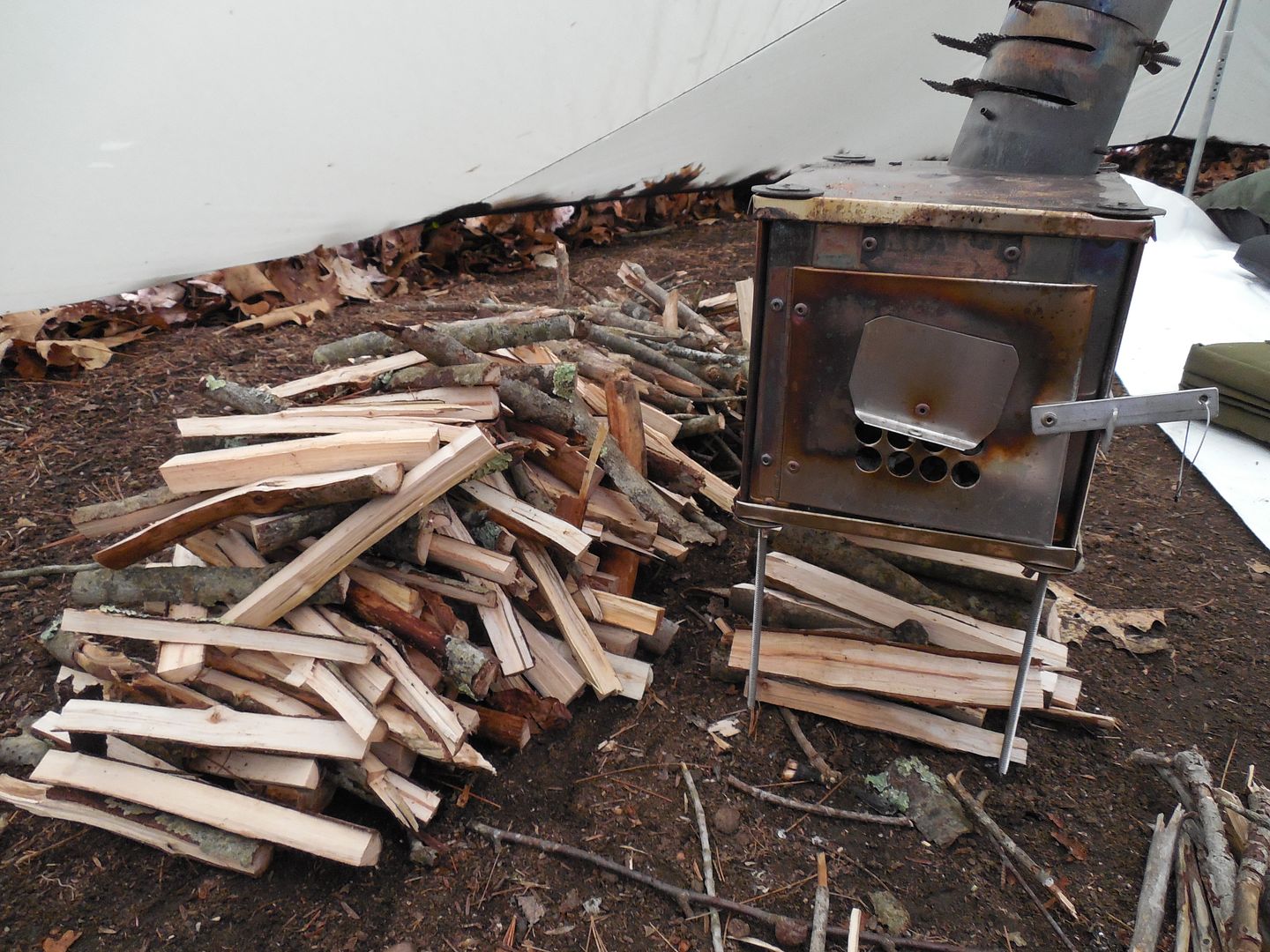
Speaking of energy I used the stove to warm water for a bandanna bath. The closed cell pad was positioned so I can take the bath outside but still stoke the stove and dry off on the pad inside. Also my nakedness is sure to intimate bears. This camp is for thriving, not just surviving.
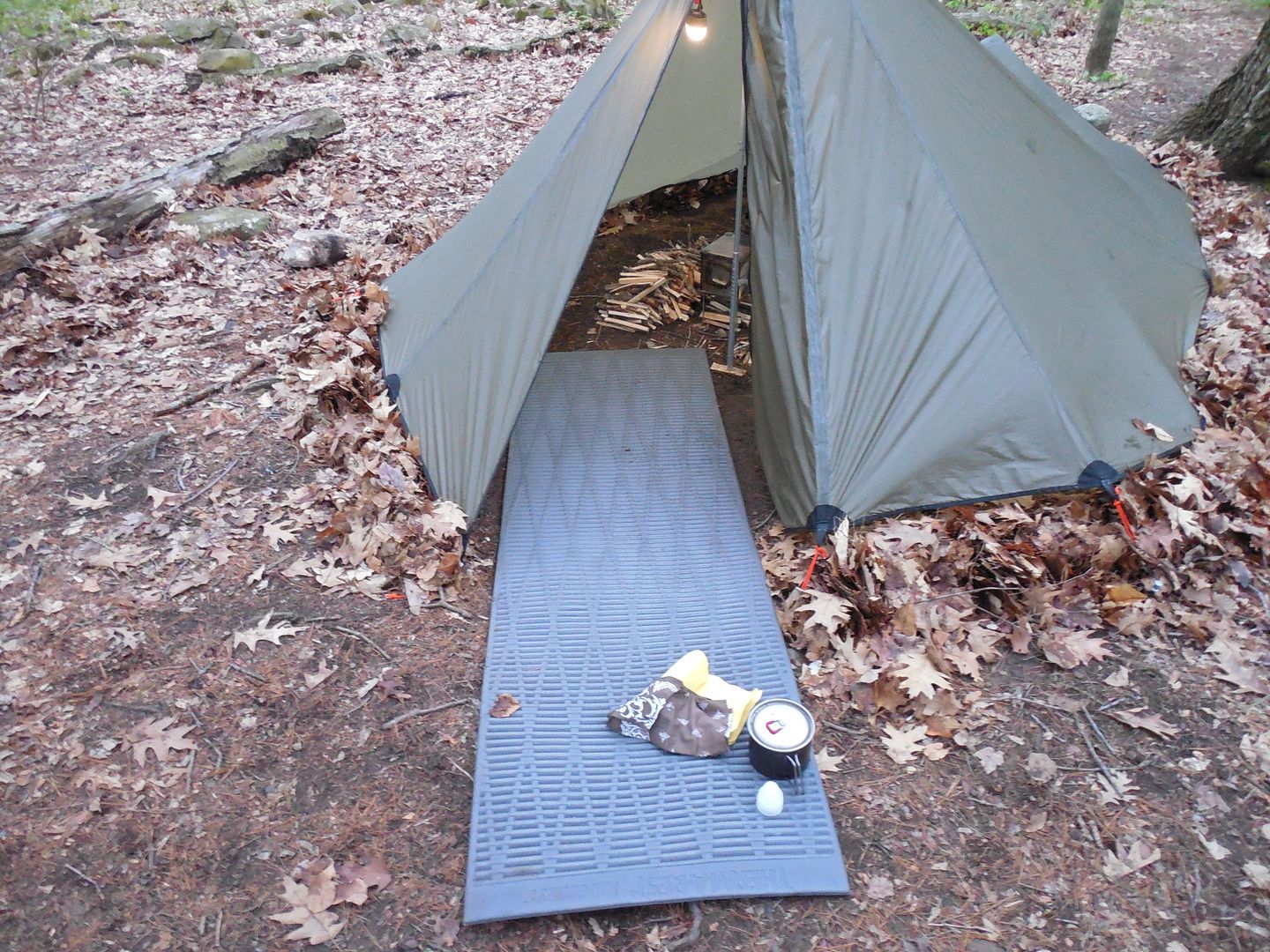
Getting on to dusk. Lights and heat are on. The water is next.
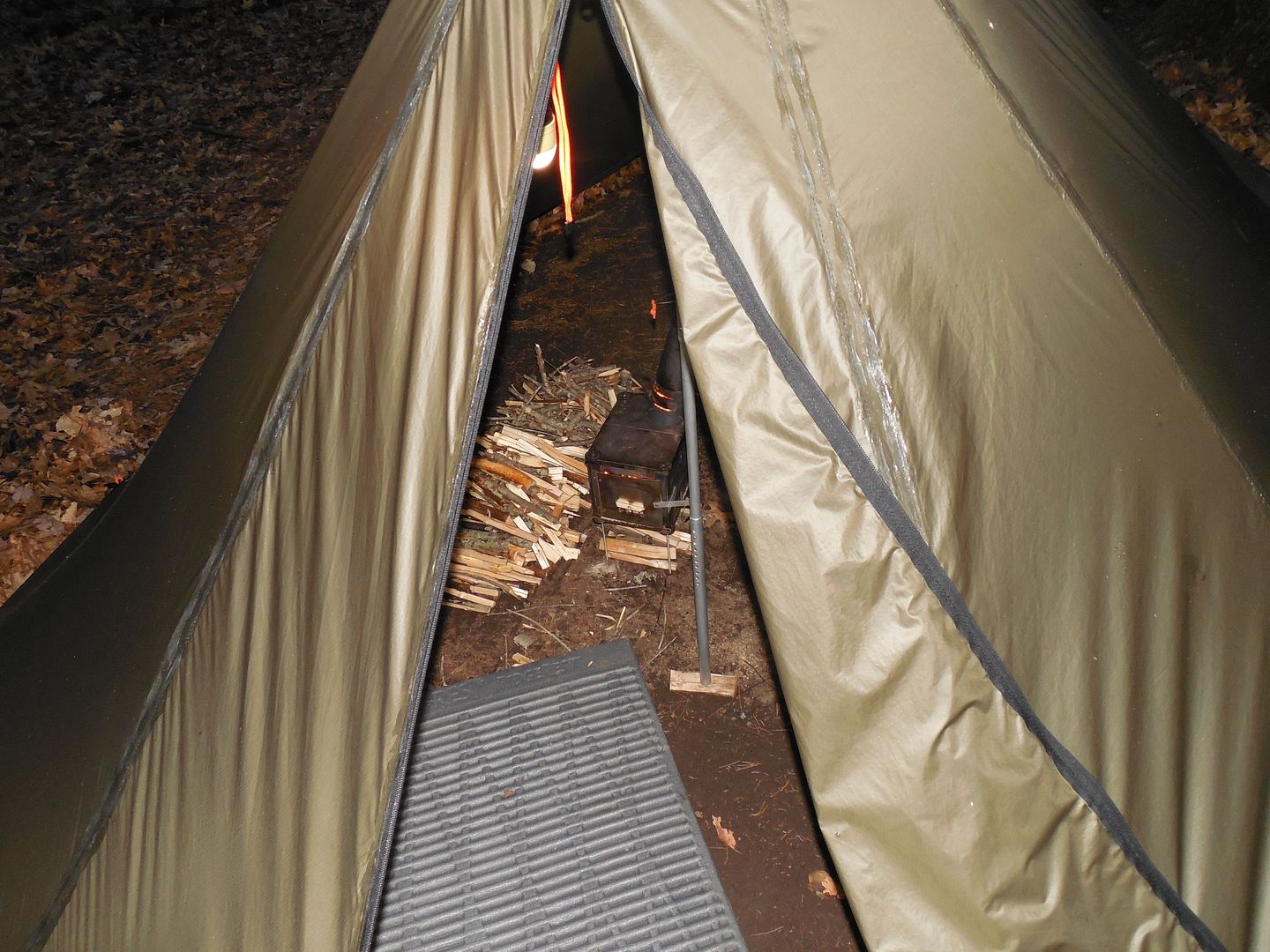
In a small backpacking shelter like the Kifaru Paratipi this is best done outside however even during deep winter the temperature is irrelevant as the water is warm and tent hot. It was about 45 with light rain so no big deal but still it felt a bit chilly till the warm water was used.
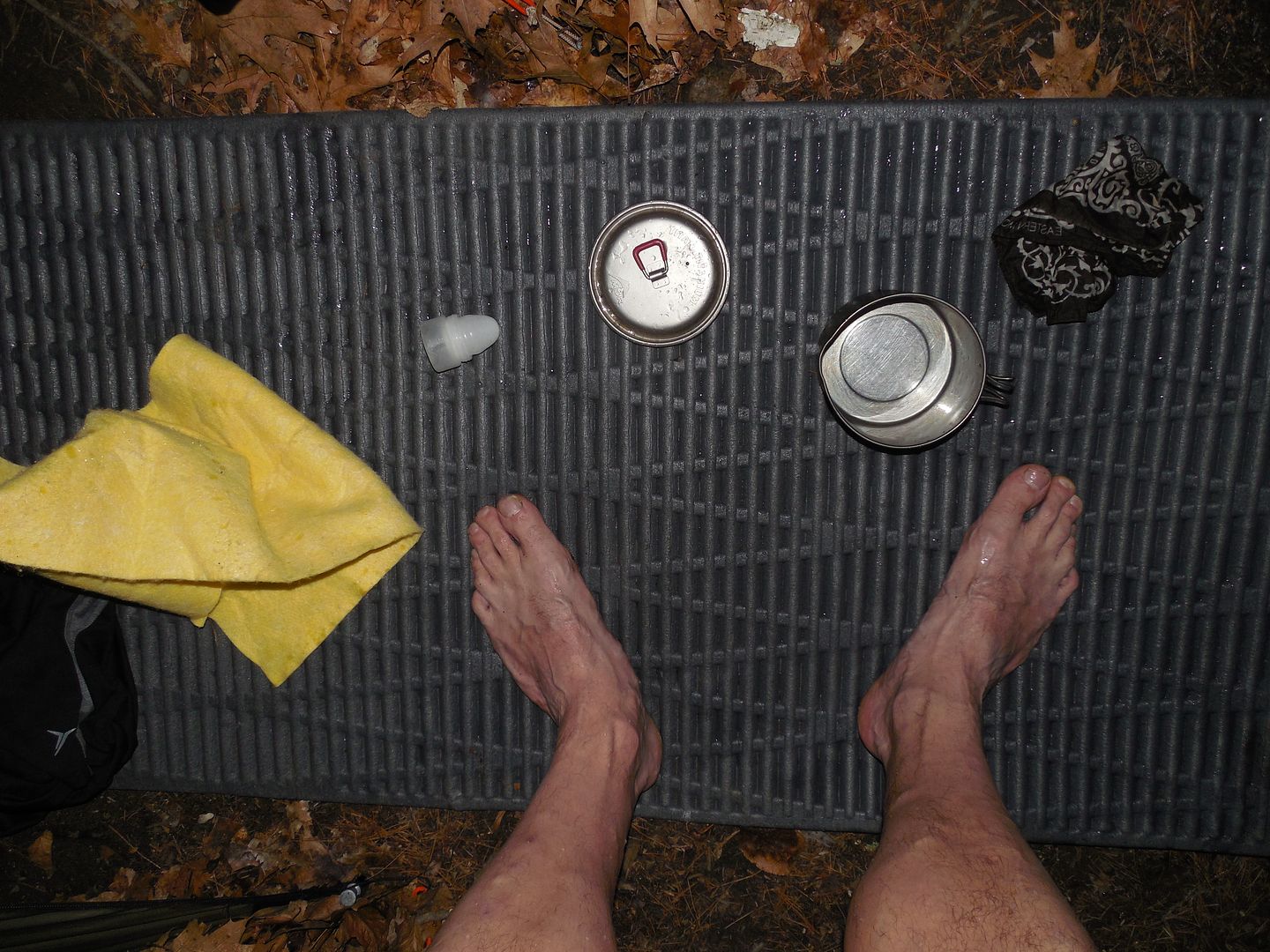
It must be 120 degrees Fahrenheit in here! Another pro to the camp shower is I found a nasty tick on me. It's fast removal will help mitigate my chances of contracting Lyme. I used the deodorant stone which is a fantastic antibacterial thingy. They last for a long long time. No need for camp soap.

Central heating and cooking. Warm, clean and soon to be well fed.
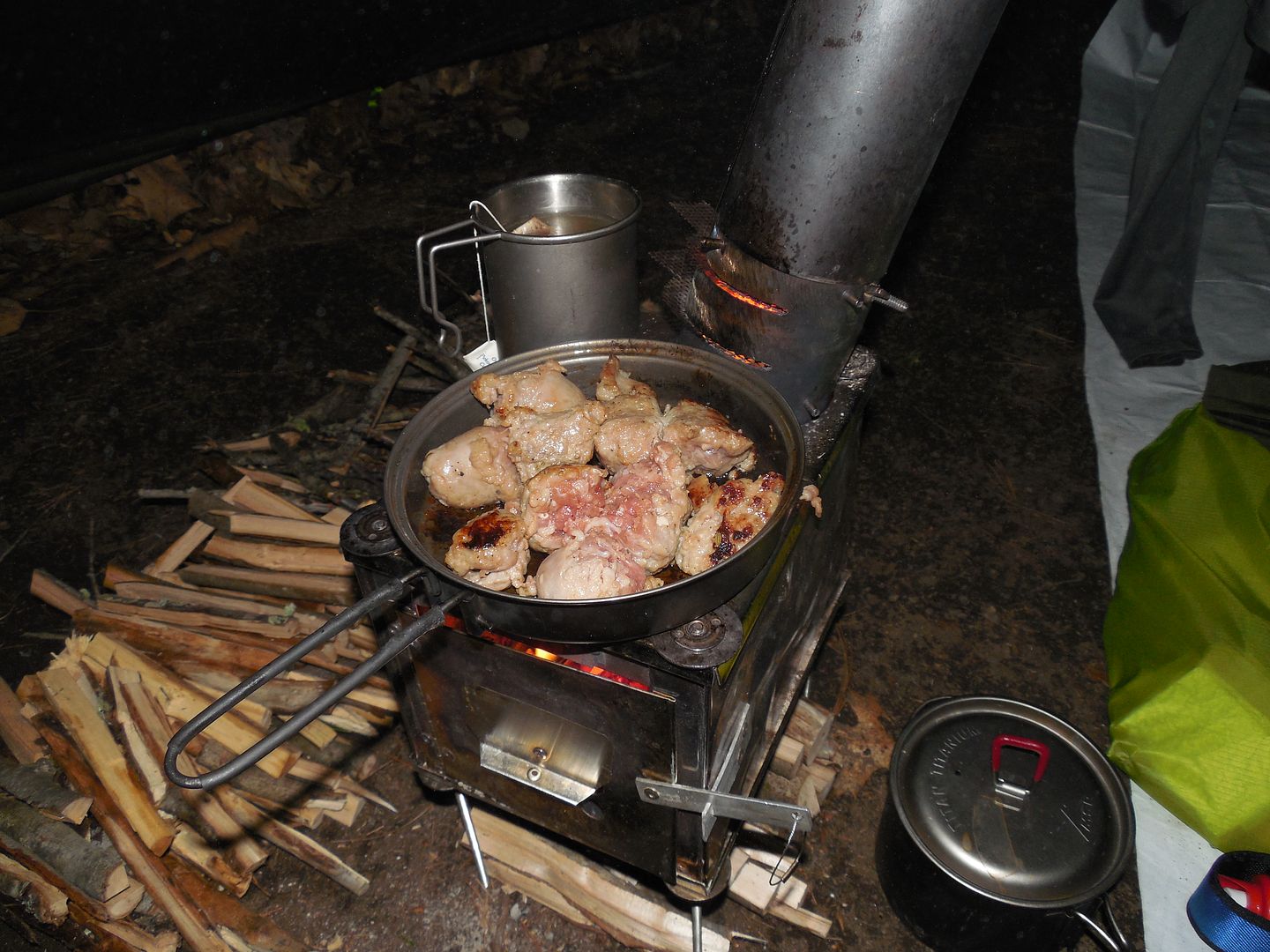
Breaking camp the next morning. I left the leaf outline of my shelter. Maybe the next hiker will wonder what the heck was going on. Or maybe not as nature is good at dispersing and breaking down leaves.
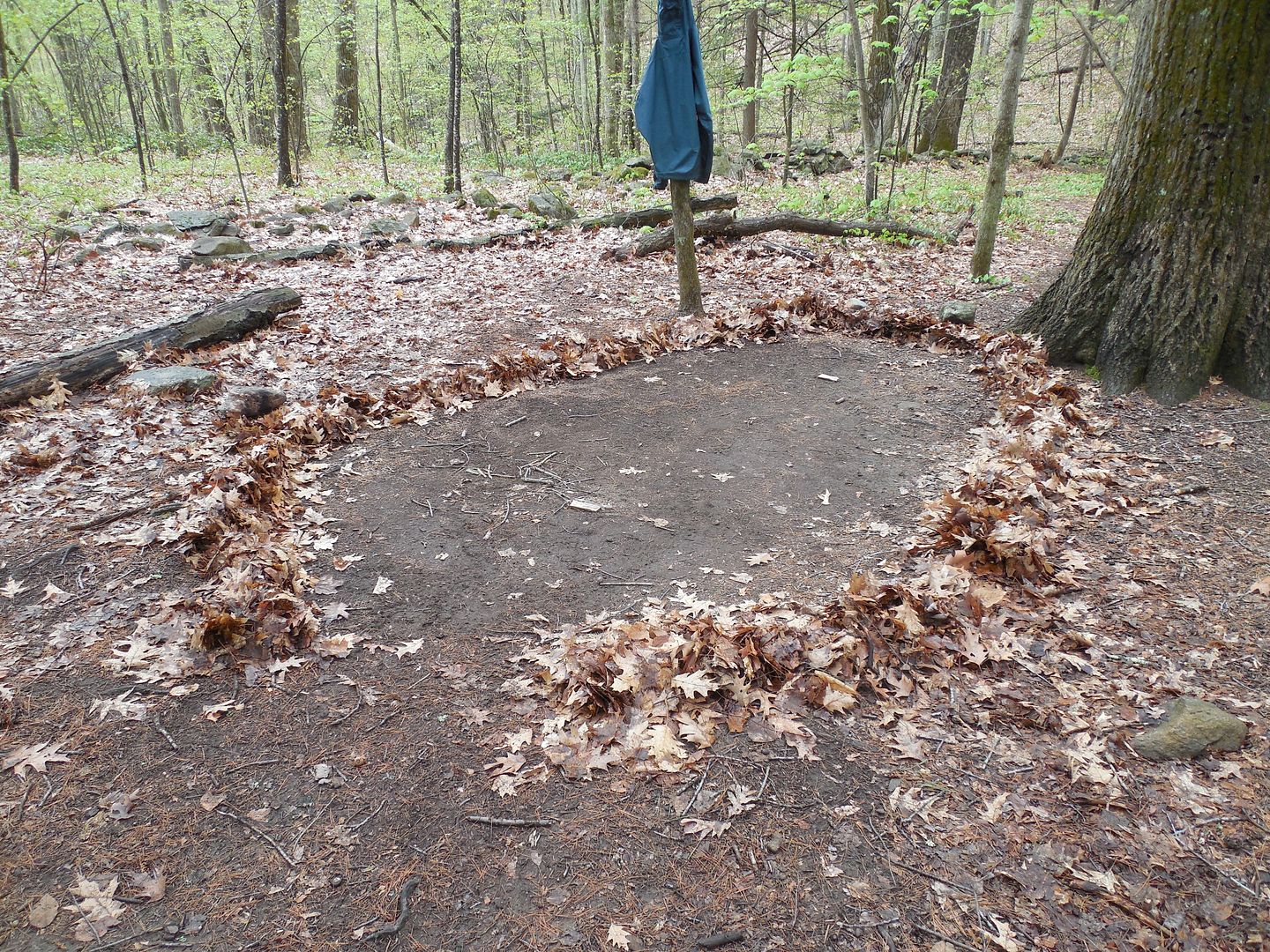
Hiking out in the higher country scrub. One of my favorite environments. It was windy, rainy and sunny all at the same time.
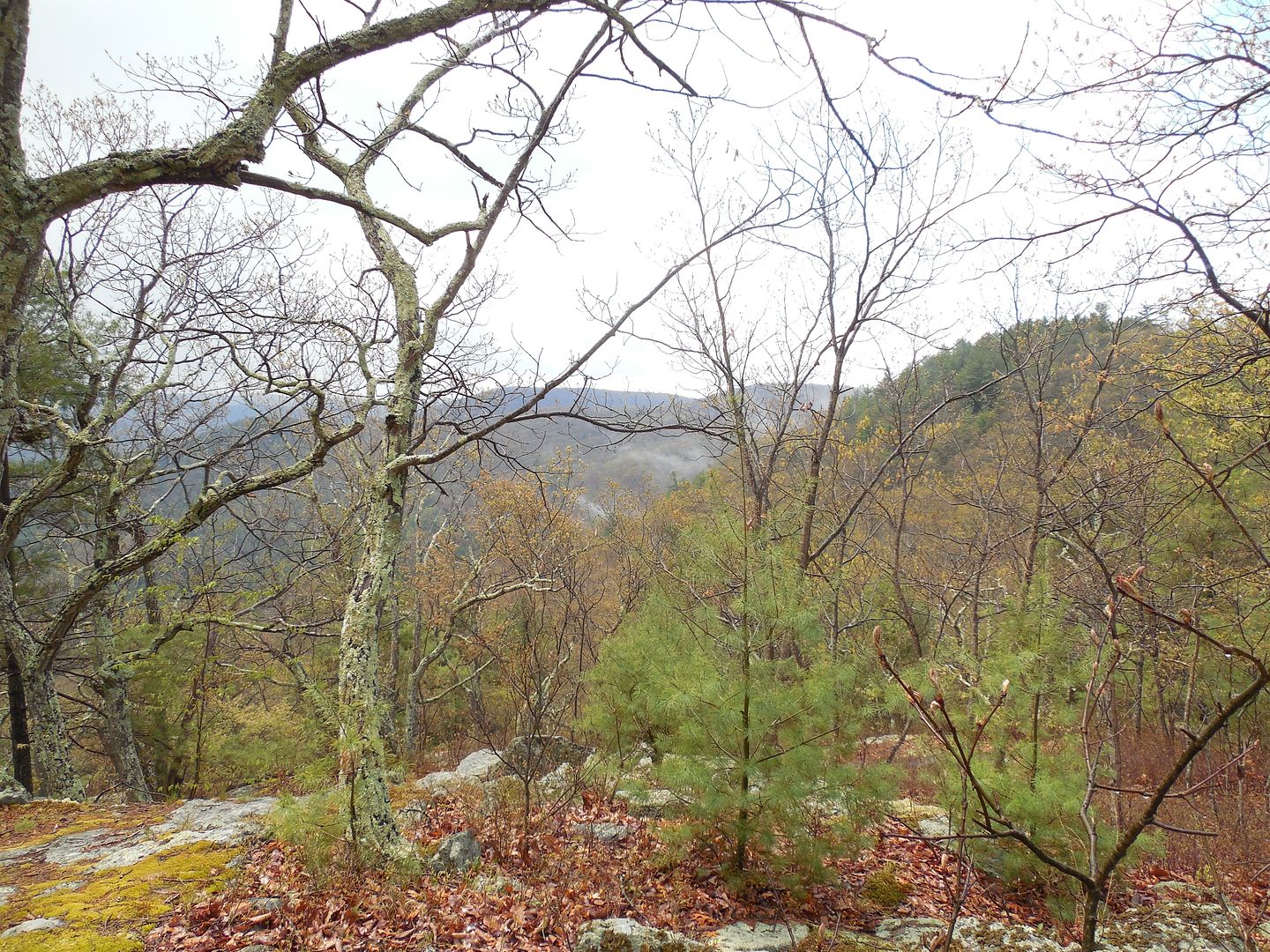
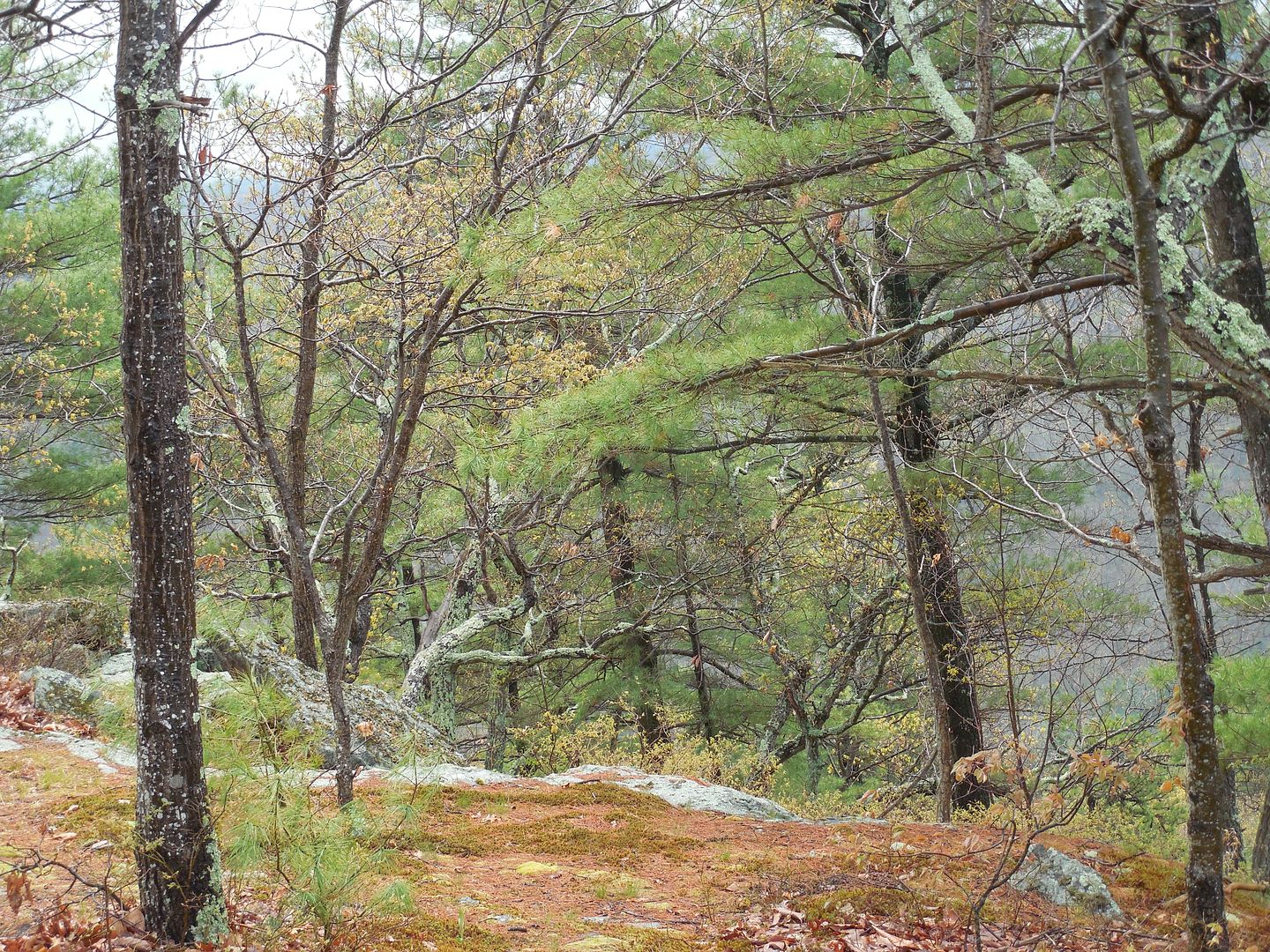
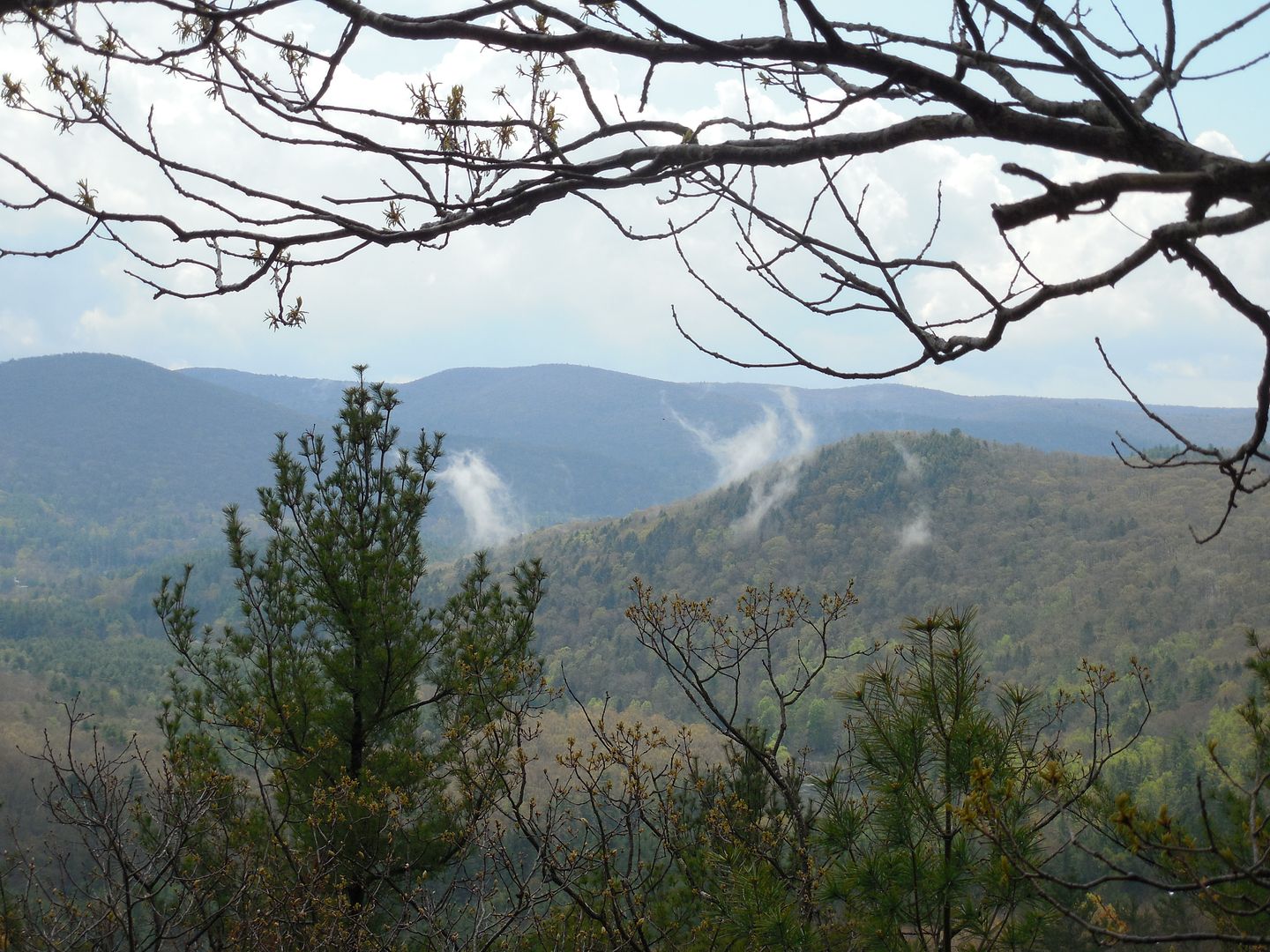


Stopped for a drink here.
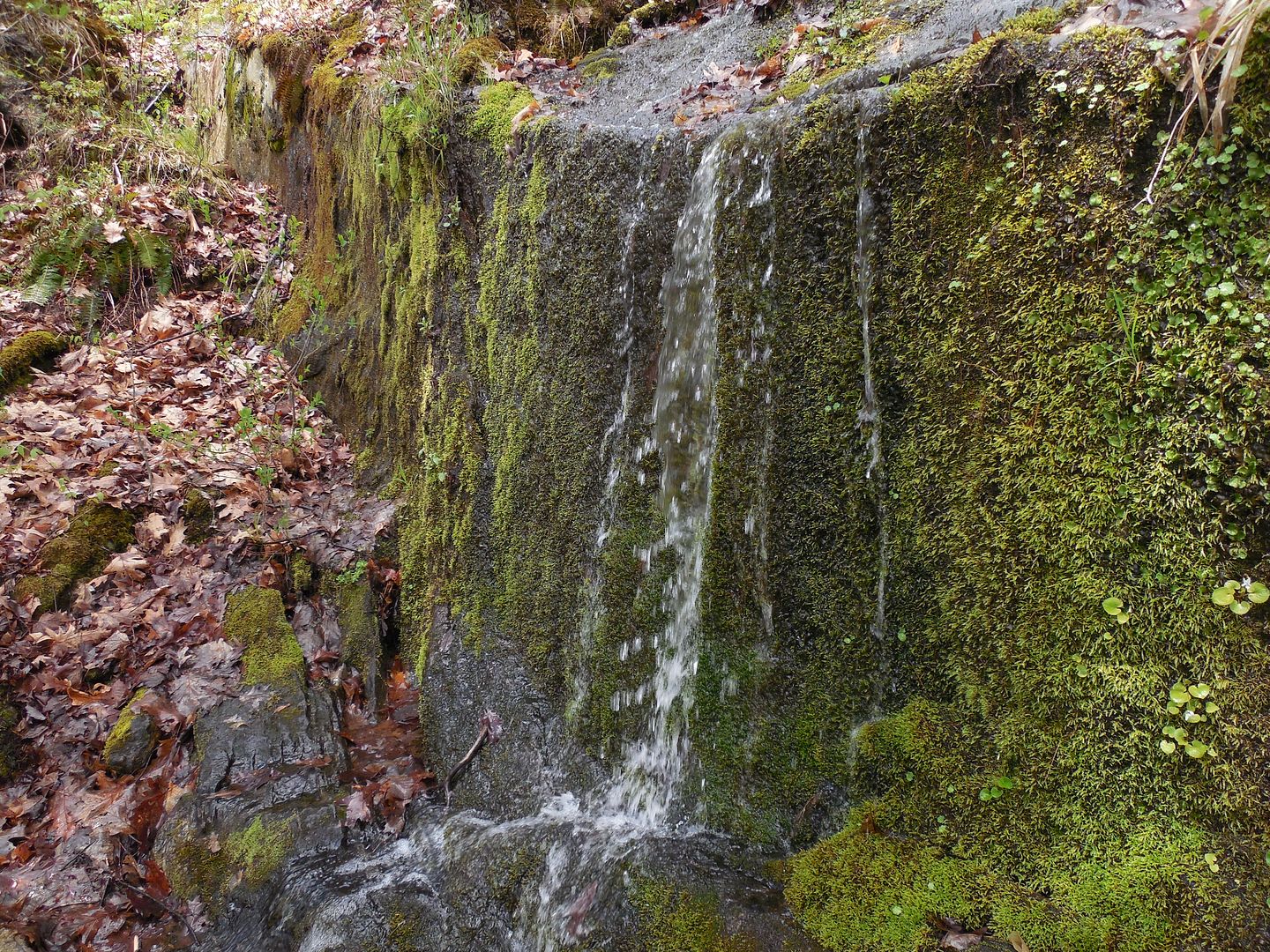
Nearing the end of the hike. That's about it. We covered the primary resources required for a backpack hot tenting system though most any camp will require at least one or more. Water! Wood! Power! The most important being water as without that no camp is sustainable. Without wood you don't have a heated camp and sometimes no water. Without power you're limited to the daylight hours for many activities though the stove can put off some light. Also power will run the GPS and cellphone.
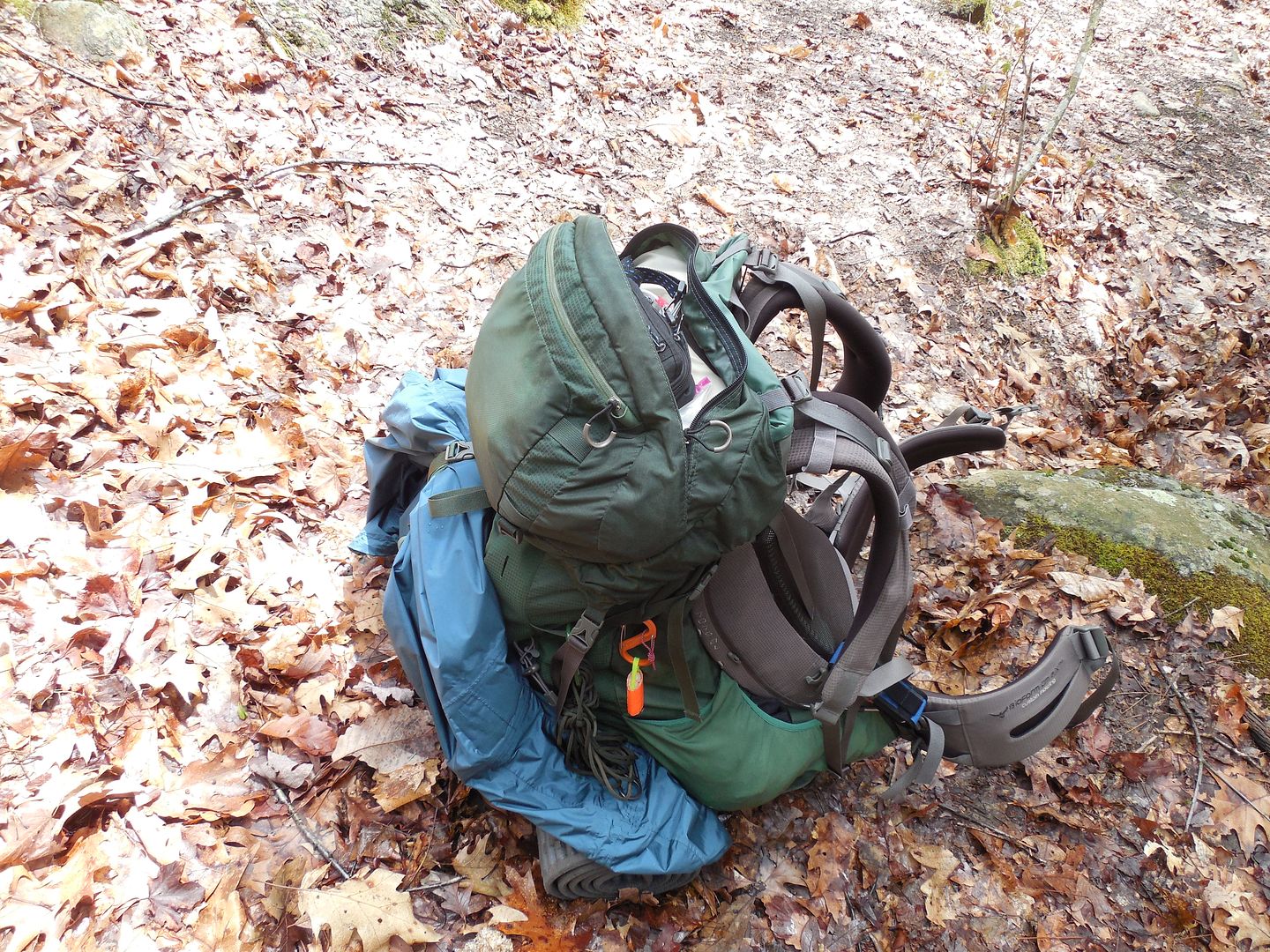
There is a review of the Mora 746 for those interested as used during this outing though owned this knife for years. One of my favorite Mora pack knives. It doesn't have the label "Bushcraft" so the cost is much cheaper.

[video=youtube;qZWMH_Nk98Y]https://www.youtube.com/watch?v=qZWMH_Nk98Y[/video]
So lets Go! Wood, Water and Power! But first lets check out the falls on the way to the trail.
Part 1.





My backpack for this outing. Inside is a hot tent with all the fixings but every attempt was made to reduce pack weight within reason.

The leaves were at the very cusp of the final week of their explosion. Some green but still a brown and gray overlook. The transformation from this stage to full leaf cover tends to be fast.

Lots of White birch however for once didn't need the tinder.

Lots of quartz as well which is another resource but again this outing's focus wasn't on marginal/field expedient firecraft methodologies.

Looks like I will be going over that hill in the distance. I always enjoy seeing the inevitable before hand.

Looks that way.....

Yup! LOL!

All the rivers, streams and brooks were very high as it rained on and off for most of the week it seemed. Naturally that mean potentially damp wood.

Finally made it to camp an hour before dark. When the weather is questionable one of the first things I do is setup a rain fly. This allows me to unpack without drama. In this case I used a poncho on a ridgeline with two sliding friction knots.


Dark came fast. Maybe it was shorter than 1 hour before? When it's cloudy all day and the phone is packed away time isn't so easy to discern.

What does a heated shelter camp run on? You guessed it wood, water and power.
Power for illumination was needed.

Wood for fuel as planned on boiling water. Yup the wood was wet despite my best foraging skills. Things are harder in the dark.

Light weight backpacking tools. A Mora 746 and Felco 600 saw.

One way to deal with damp wood is to split it. No axe however did have a knife. Yes I am batoning with a Mora. Yes the knife didn't break and world didn't end. My baton was kinda skanky however.

GO!


One pro to a small stove being a little wood lasts a long time. The primary con being increased wood prep and stoking. Split wood in this situation is almost a requirement.

I considered sleeping under the poncho despite it's high pitch even as the rain and wind picked up. I was packing a down bag but had a UL bivy. Also had some water tabs and a bag of cashews. I didn't hike all that gear in just to spend another night under a poncho. I setup the heated shelter camp. Now that's better!


I processed enough wood for the night and into the early AM. The little stove doesn't need much to keep things comfortable in the 40's. During deep winter I would use a larger stove and more wood.

Stove on one side, sleep system on the other. Sometimes when packing a down bag in a single walled not breathable shelter I employ a bivy. This one has a water resistant DWR top and waterproof sil nylon bottom. So I need not worry about condensation. Shelters are a bit like knives, axes, guns etc etc etc. Improper use can have less than desirable results.

The wood was wet but splitting made all the difference.

Boiling the water. I like to get the pot on ASAP.


The traditional bacon. During summer I wouldn't pack something like this for longer range outings.

UL DWR bag liner is nice for resting in the front of the shelter as the water comes to a boil. Inner liner then bag then outer bivy are parts of my sleep system but don't always use all the components

Dinner is ready.

Got too hot for the bag liner. I like to raise smaller shaped tarp type shelters off the ground to increase floor space. Then I cover the gaps with leaf litter or snow. This allows me the stretch out in the front without touching the walls.

The old stuff sack for a pillow trick.

Yes it rained all night.

End of part 1. Below is a video for part 1.
[video=youtube;BcDIqpt0ufc]https://www.youtube.com/watch?v=BcDIqpt0ufc[/video]
Part 2.
Why do I say water, wood and power in that order? Because in my view that is the order of importance however there have been occasions when getting the stove fuel was temporally more important than acquiring potable water. However usually getting the stove running first was a requirement to get water either by boiling or melting snow. The wood situation was looking pathetic.

The bivy did a fine job keeping my bag dry. I used a DIY Tyvek ground cloth then a Ridgerest wide closed cell pad and finally a Downmat 7XS insulated inflatable for protection and insulation from the ground. I use the closed cell pad for other things but always move it back under the Downmat before going into the bag.


Scrounged up some fast wood by the under tarp processing station to get the stove running as needed to boil water and dry things out.



I still had some water from the day before but was running very low and as water is often my number one priority went for that first. Water is needed to drink, cook and clean. Without it no camp is sustainable. Water very often is everything. The same lesson is applied to my BOB and other preps as well. You're only as good as your last hydration event.
UL backpacking hydration system.
1. Two 70 oz Platy bags. One is used for not potable water. I probably should label them in the near future though never drank from the wrong one because they're immediately separated from each other. Still I am a goober so it's only a matter of time so going to mark them.
2. Water tabs. I am getting low but have a new package for restocking.
3. Sawyer Mini and various attachments. Thinking about packing the larger Squeeze instead however will compare the two first. Have one never opened.

4. Always have a hard canteen as well. In this case a 34 oz Oasis

The backpacking hot tenting camp water source looks good!

Potable water kept near the Paratipi.

Not potable used to clean mess kit and later for a hot tenting bandanna bath. One of the many pros of a hot tent is the ability to clean up and dry off surrounded by hot dry air. Also unlimited warm water helps. Nice clean pots and pans with bath water waiting to be heated.

Now on to the wood processing center.

This is why we tie a poncho neck off when used as a tarp.

Mora 746 one of my favorite Mora pack knives and Felco 600 saw doing what needs to be done. All the wood was gathered off the ground to reduce moisture as much as possible.

That should be enough for late afternoon till the next day. The stove doesn't burn much.

So how is the power going?

I used the USB power bank to charge my phone and batteries when applicable. It can also run some of my lights. For this outing everything is using 2XAA. Had more than enough extra batteries. Without lights the hot tenting campsite would be less effective.

Time to put the wood in the tent then start the water for the camp shower. Again this camp runs on water, wood and power. I like to put the wood around and under the stove to take advantage of the dry heat. Every advantage and use of energy helps.

Speaking of energy I used the stove to warm water for a bandanna bath. The closed cell pad was positioned so I can take the bath outside but still stoke the stove and dry off on the pad inside. Also my nakedness is sure to intimate bears. This camp is for thriving, not just surviving.

Getting on to dusk. Lights and heat are on. The water is next.

In a small backpacking shelter like the Kifaru Paratipi this is best done outside however even during deep winter the temperature is irrelevant as the water is warm and tent hot. It was about 45 with light rain so no big deal but still it felt a bit chilly till the warm water was used.

It must be 120 degrees Fahrenheit in here! Another pro to the camp shower is I found a nasty tick on me. It's fast removal will help mitigate my chances of contracting Lyme. I used the deodorant stone which is a fantastic antibacterial thingy. They last for a long long time. No need for camp soap.

Central heating and cooking. Warm, clean and soon to be well fed.

Breaking camp the next morning. I left the leaf outline of my shelter. Maybe the next hiker will wonder what the heck was going on. Or maybe not as nature is good at dispersing and breaking down leaves.

Hiking out in the higher country scrub. One of my favorite environments. It was windy, rainy and sunny all at the same time.





Stopped for a drink here.

Nearing the end of the hike. That's about it. We covered the primary resources required for a backpack hot tenting system though most any camp will require at least one or more. Water! Wood! Power! The most important being water as without that no camp is sustainable. Without wood you don't have a heated camp and sometimes no water. Without power you're limited to the daylight hours for many activities though the stove can put off some light. Also power will run the GPS and cellphone.

There is a review of the Mora 746 for those interested as used during this outing though owned this knife for years. One of my favorite Mora pack knives. It doesn't have the label "Bushcraft" so the cost is much cheaper.

[video=youtube;qZWMH_Nk98Y]https://www.youtube.com/watch?v=qZWMH_Nk98Y[/video]
